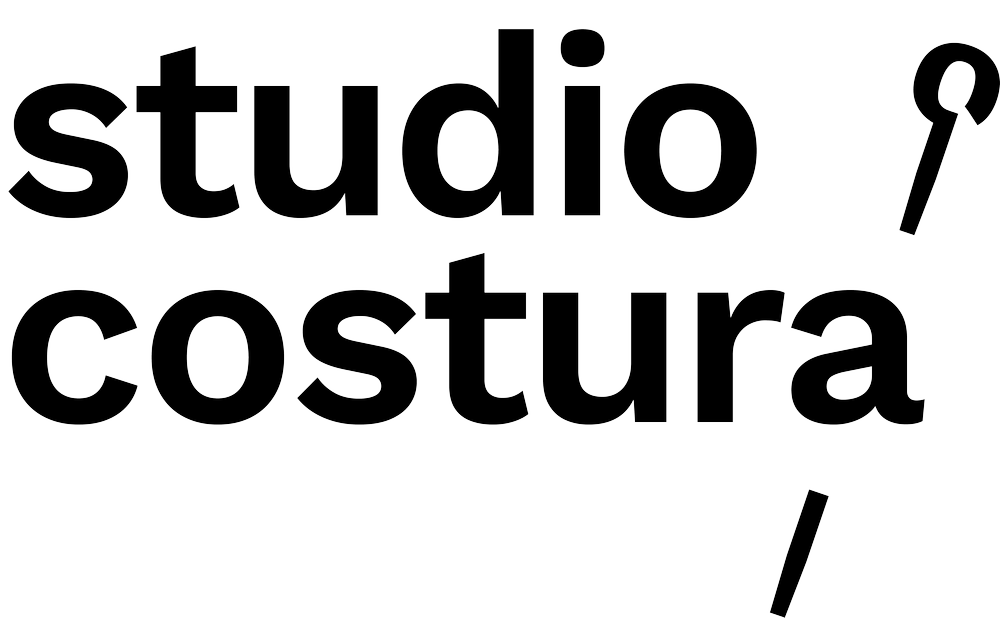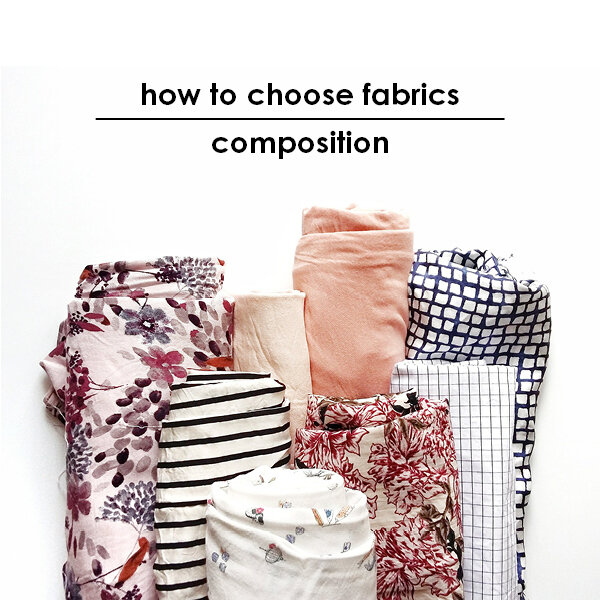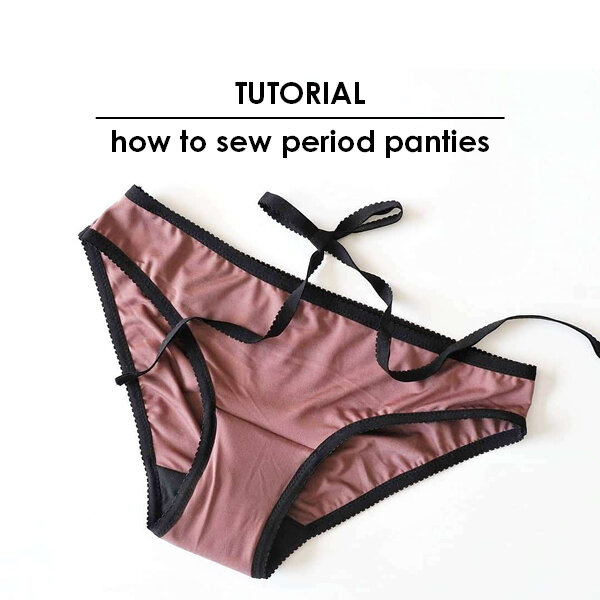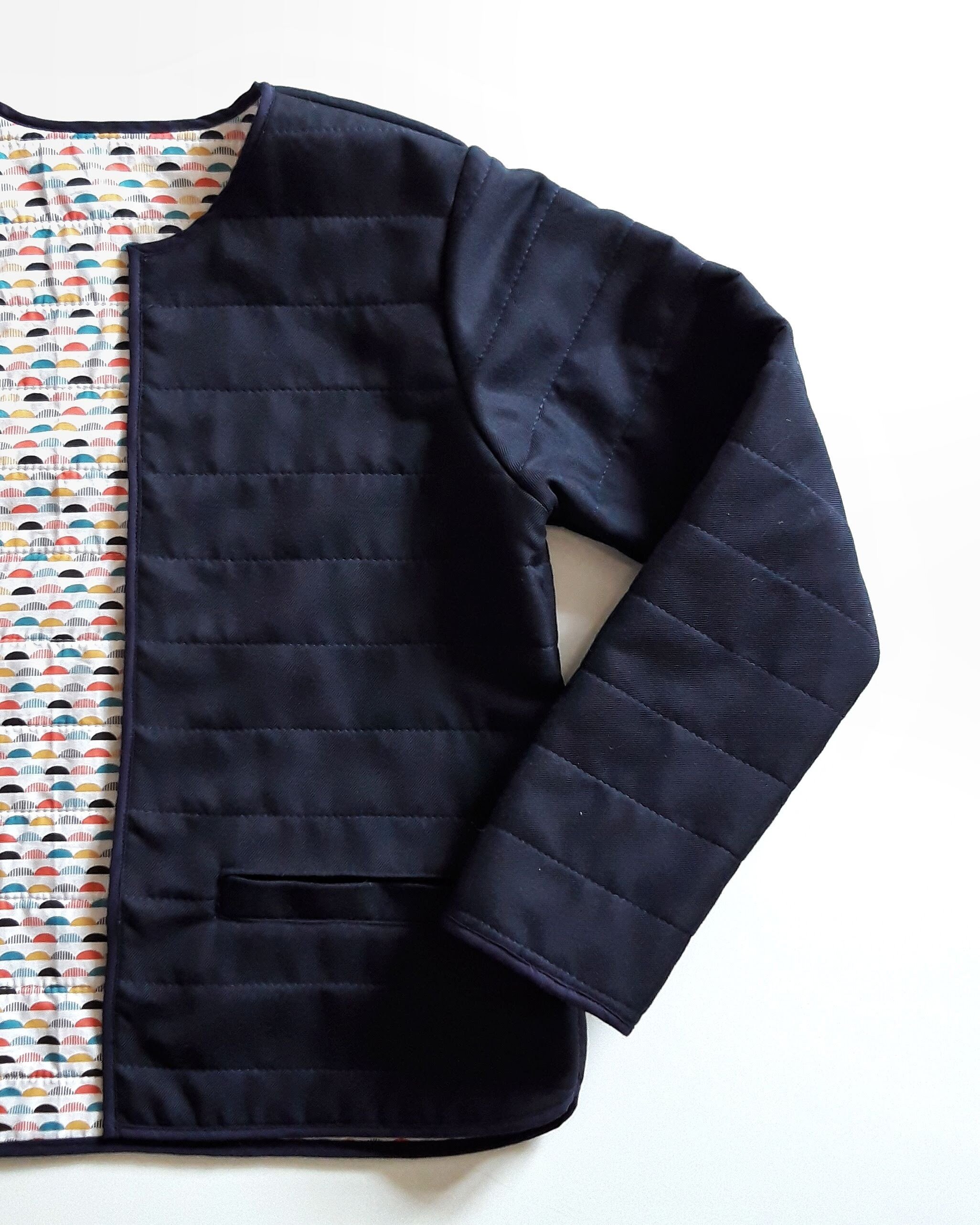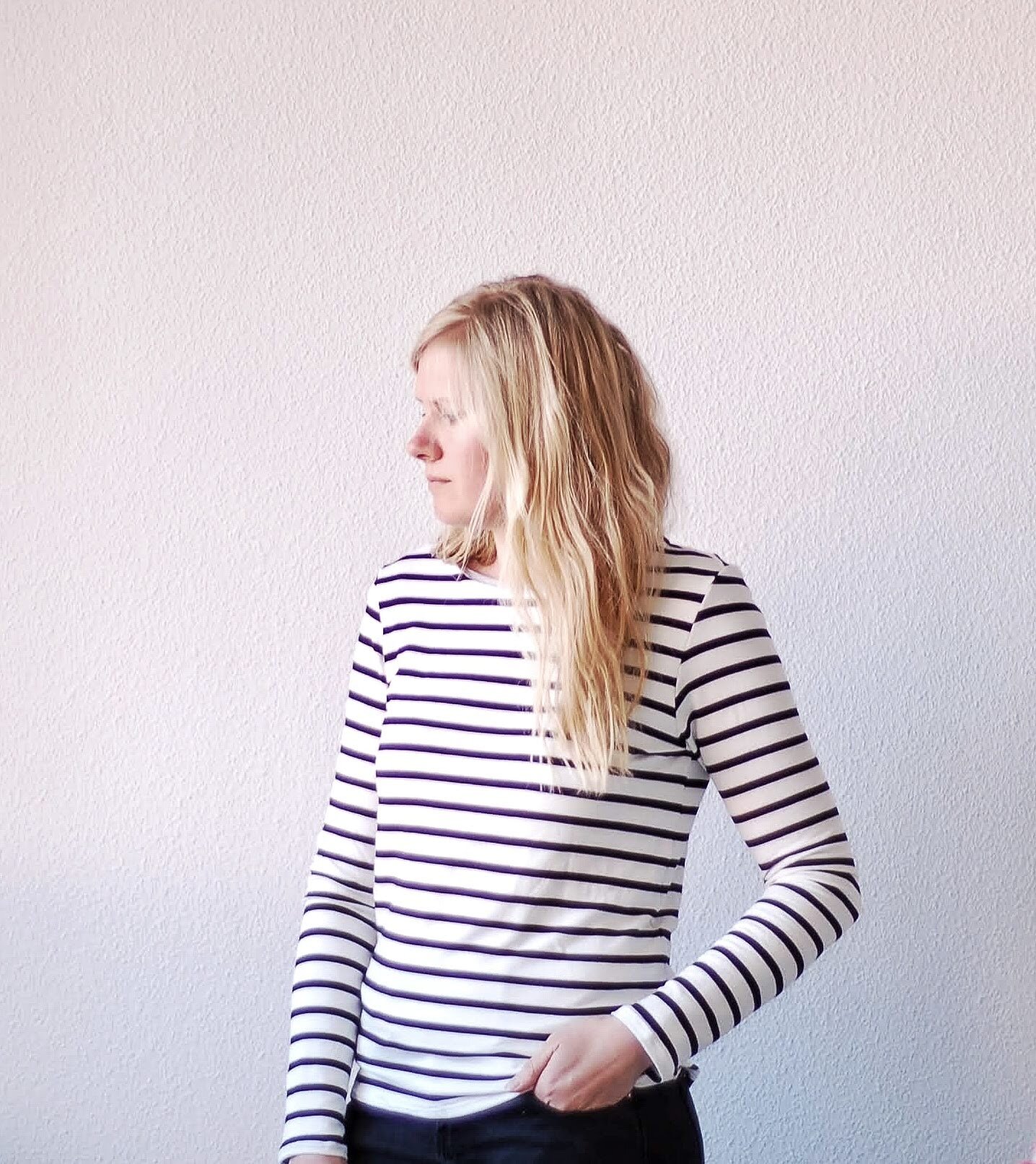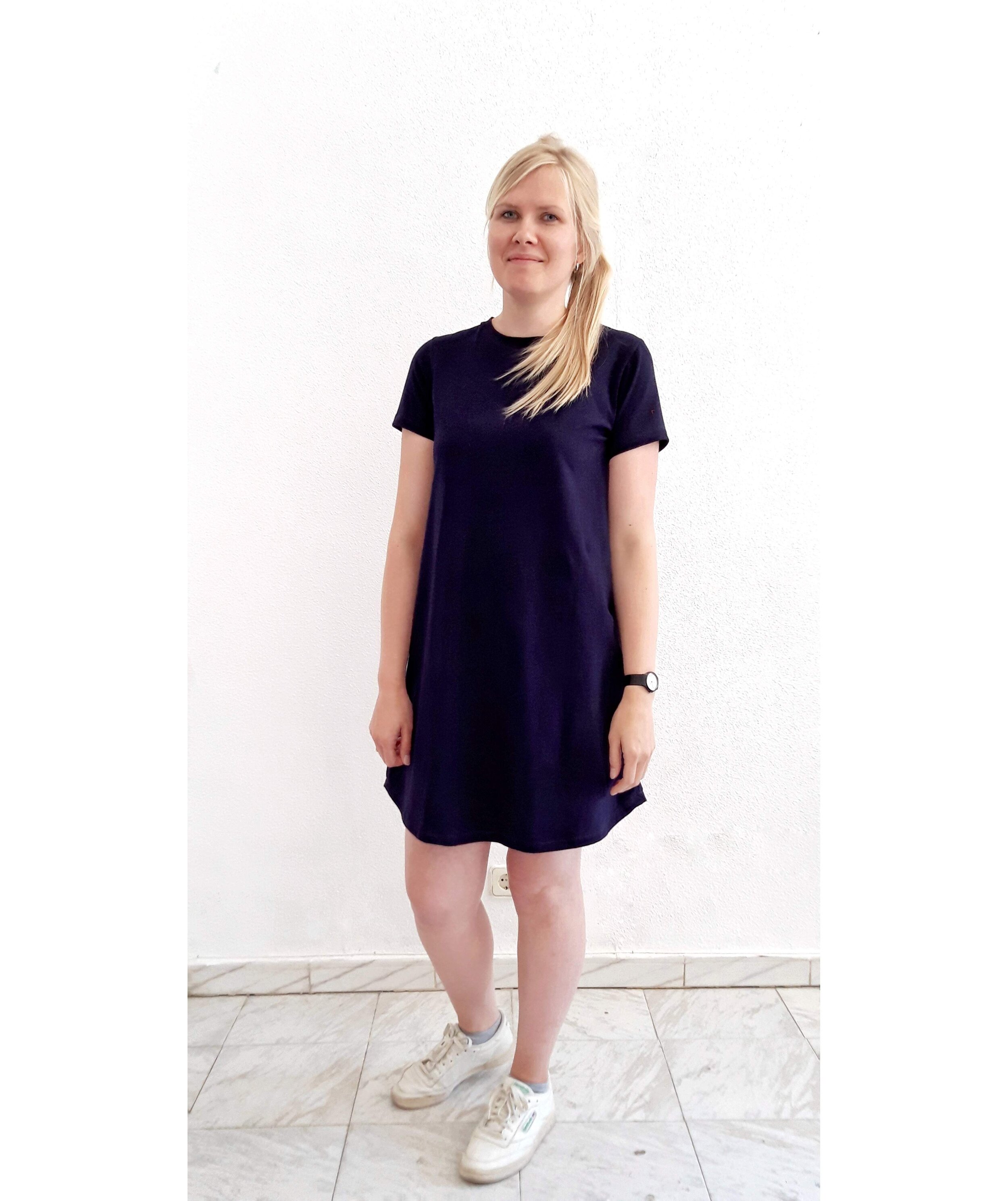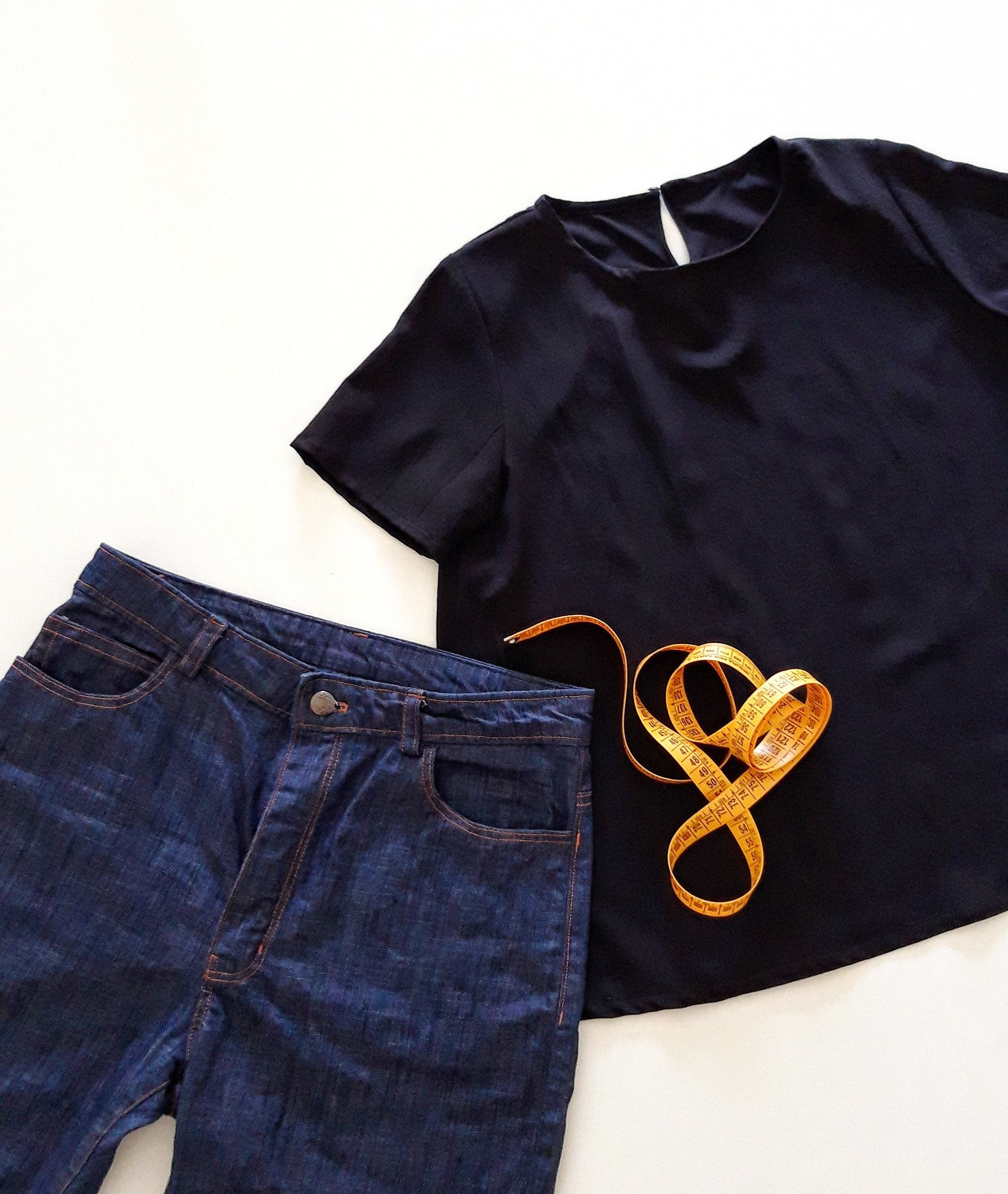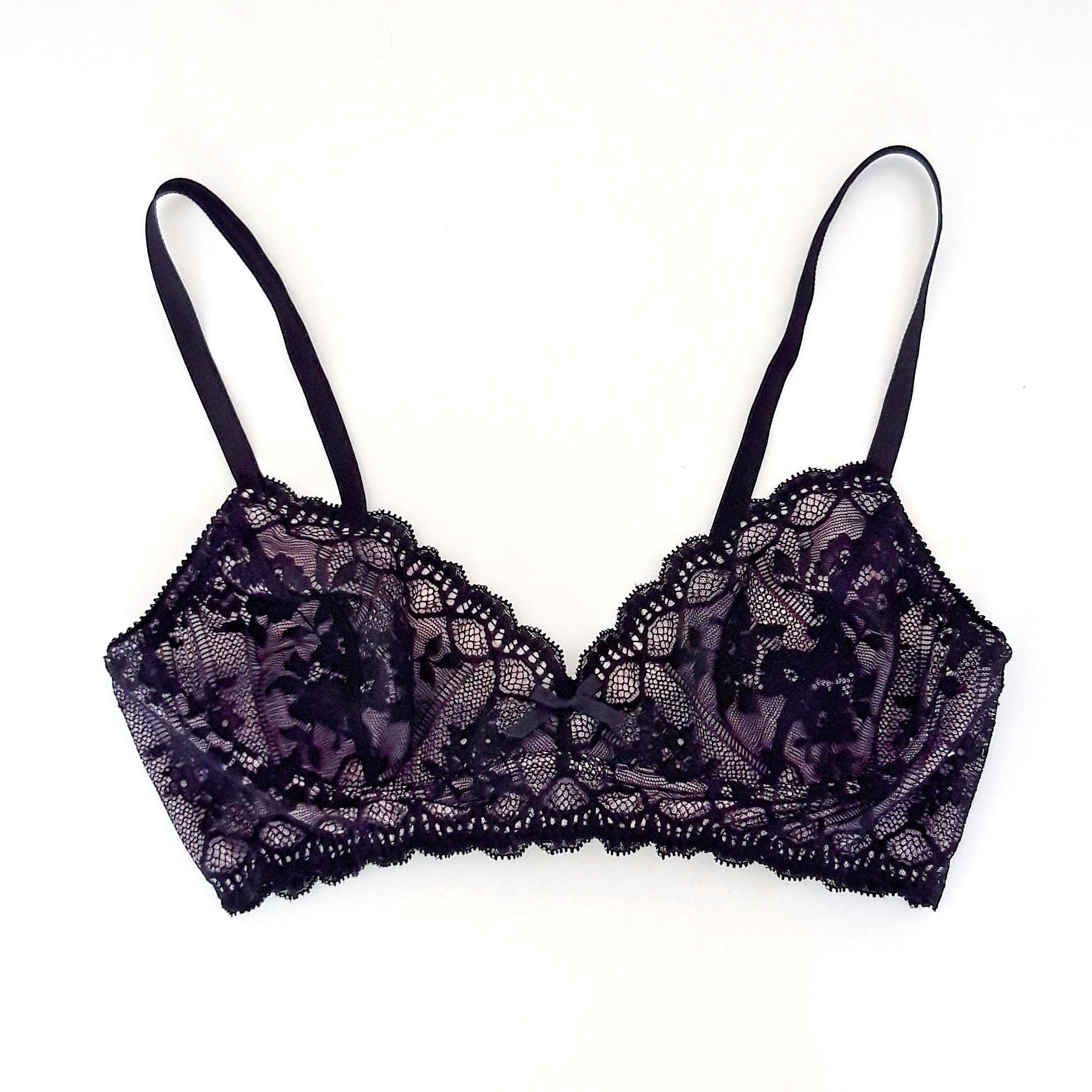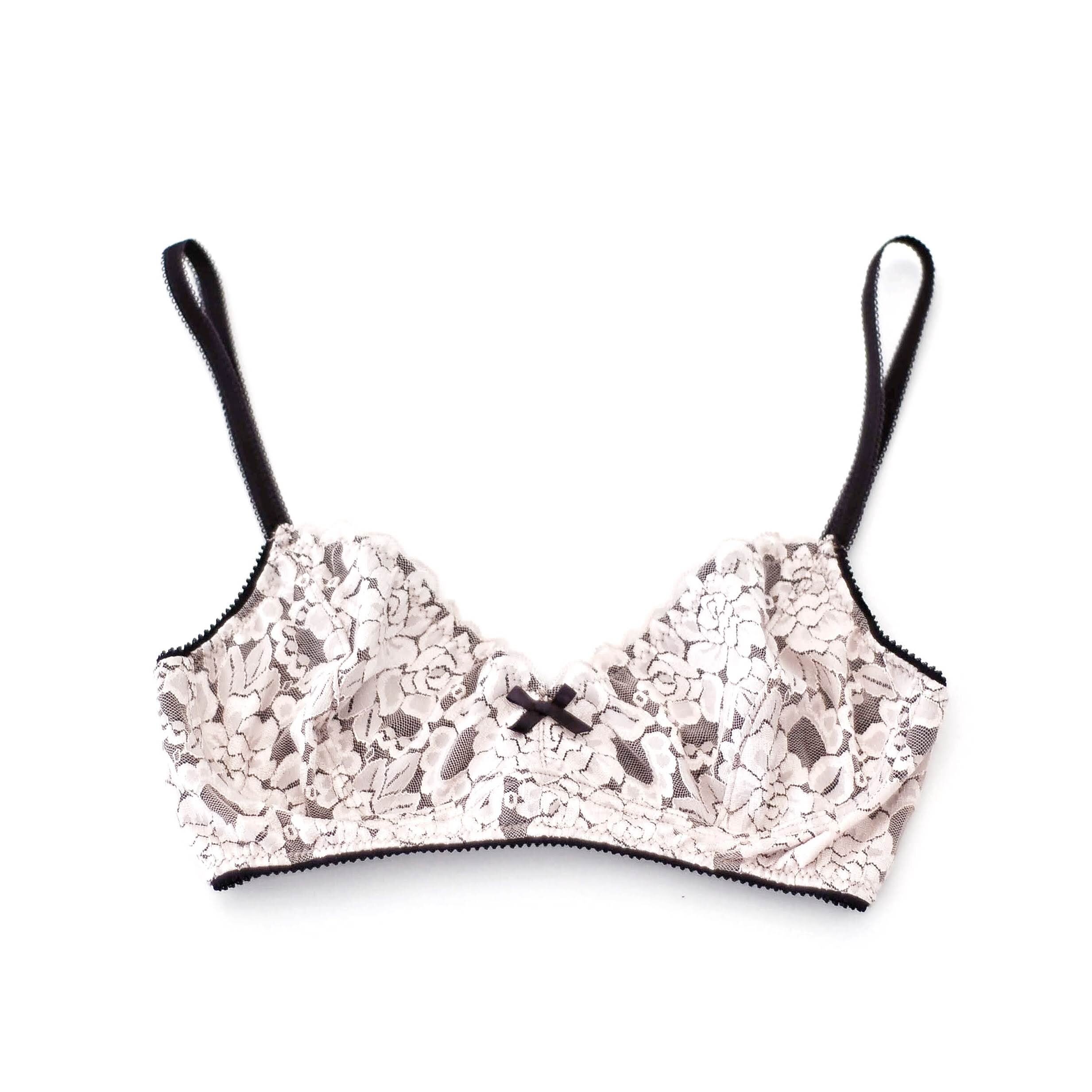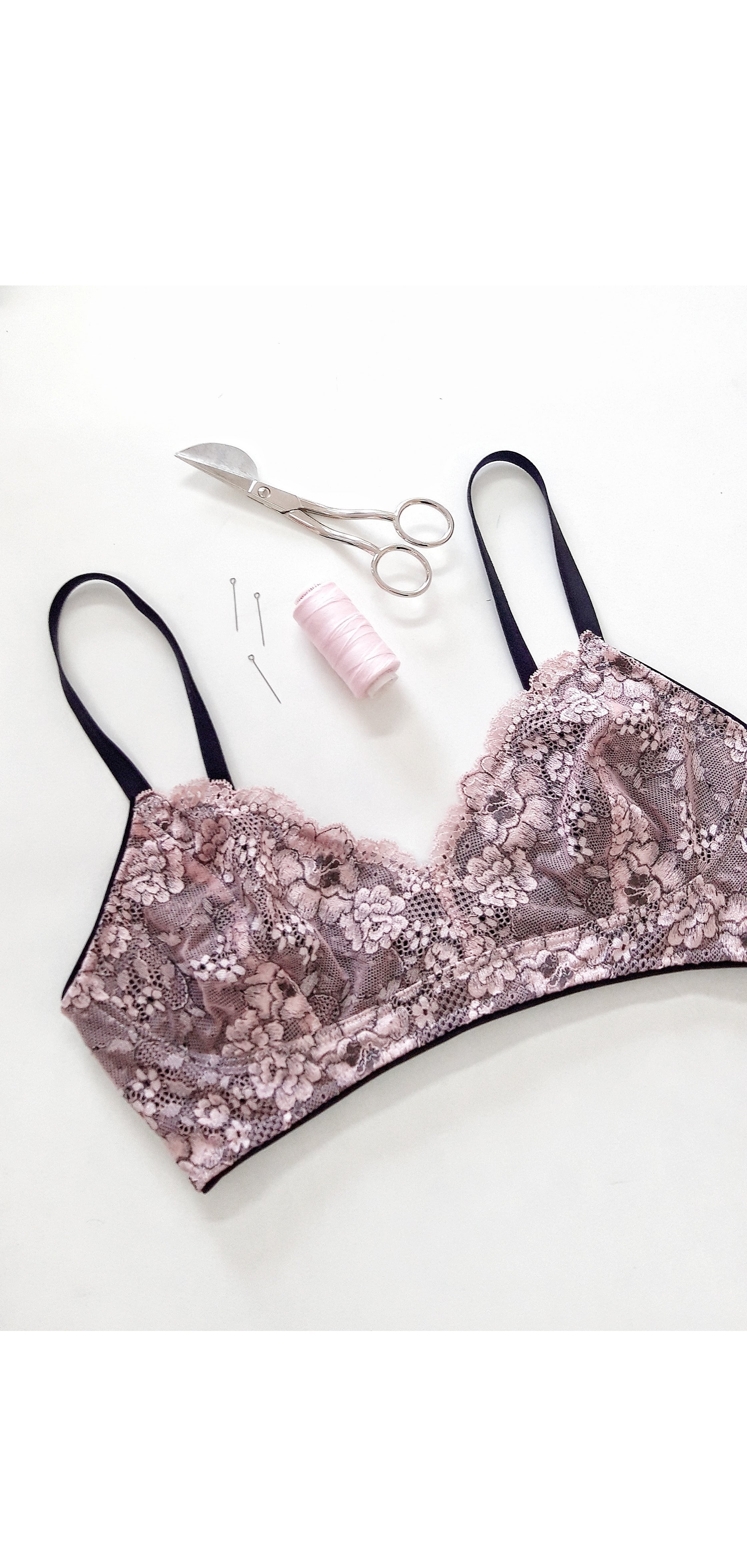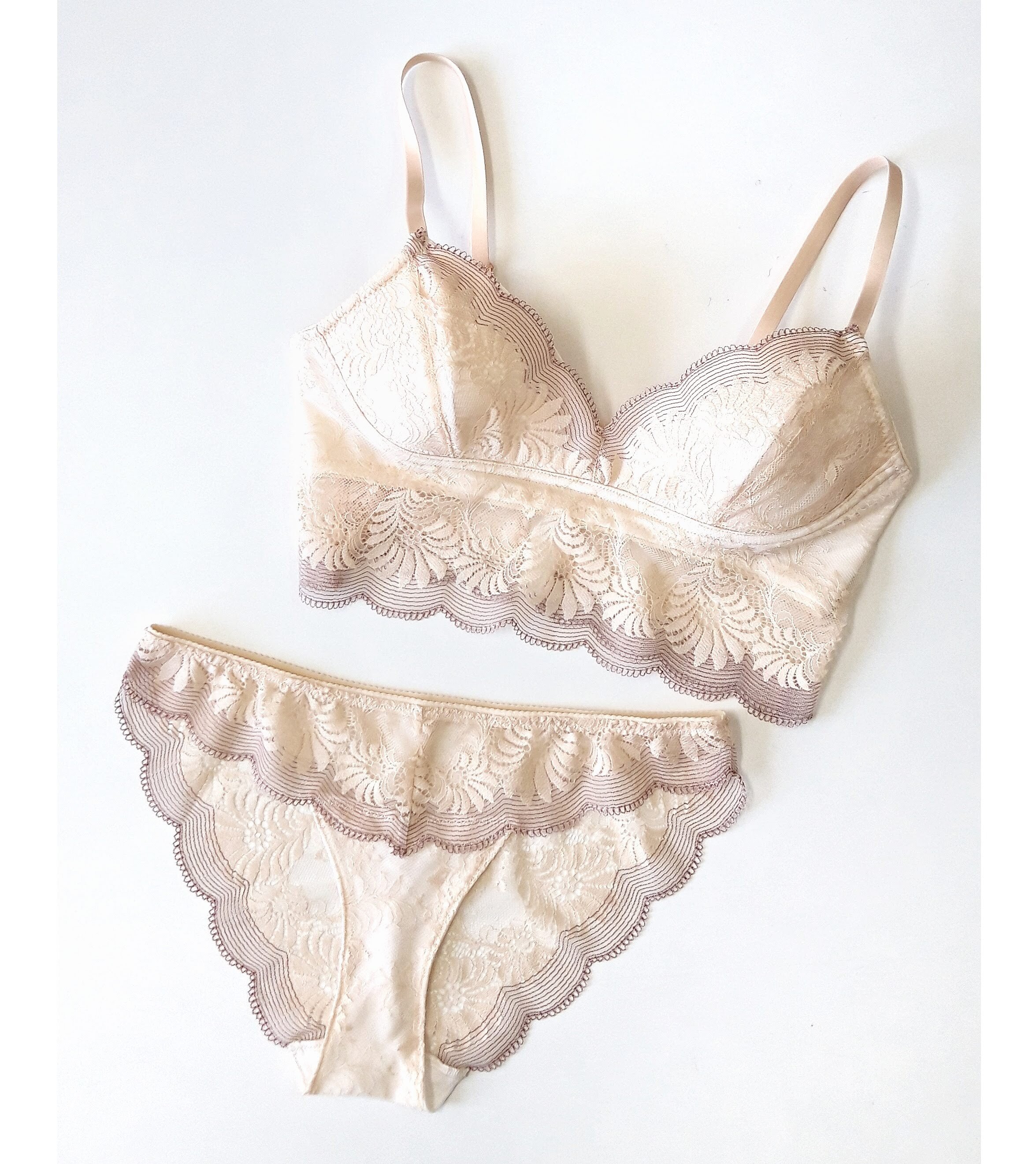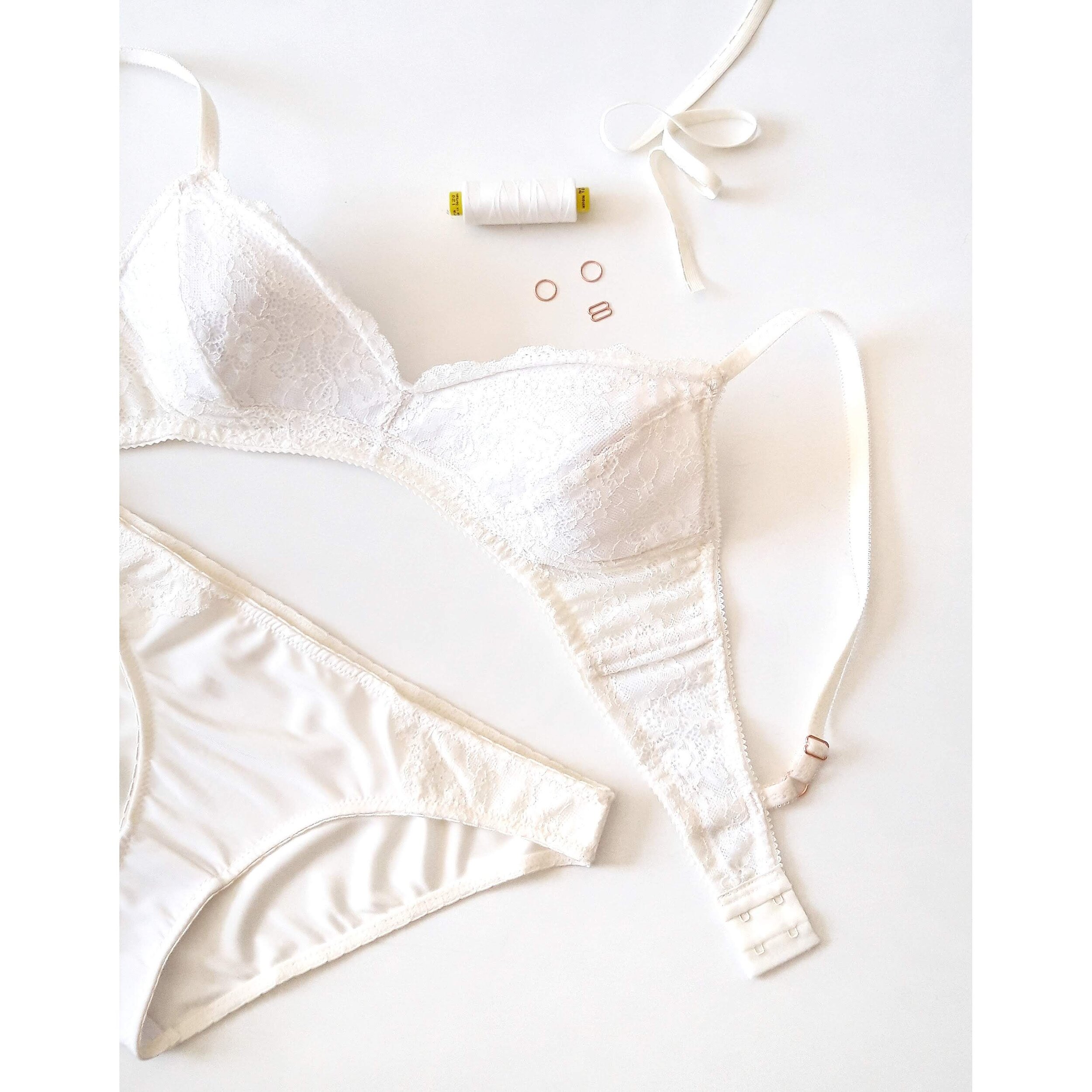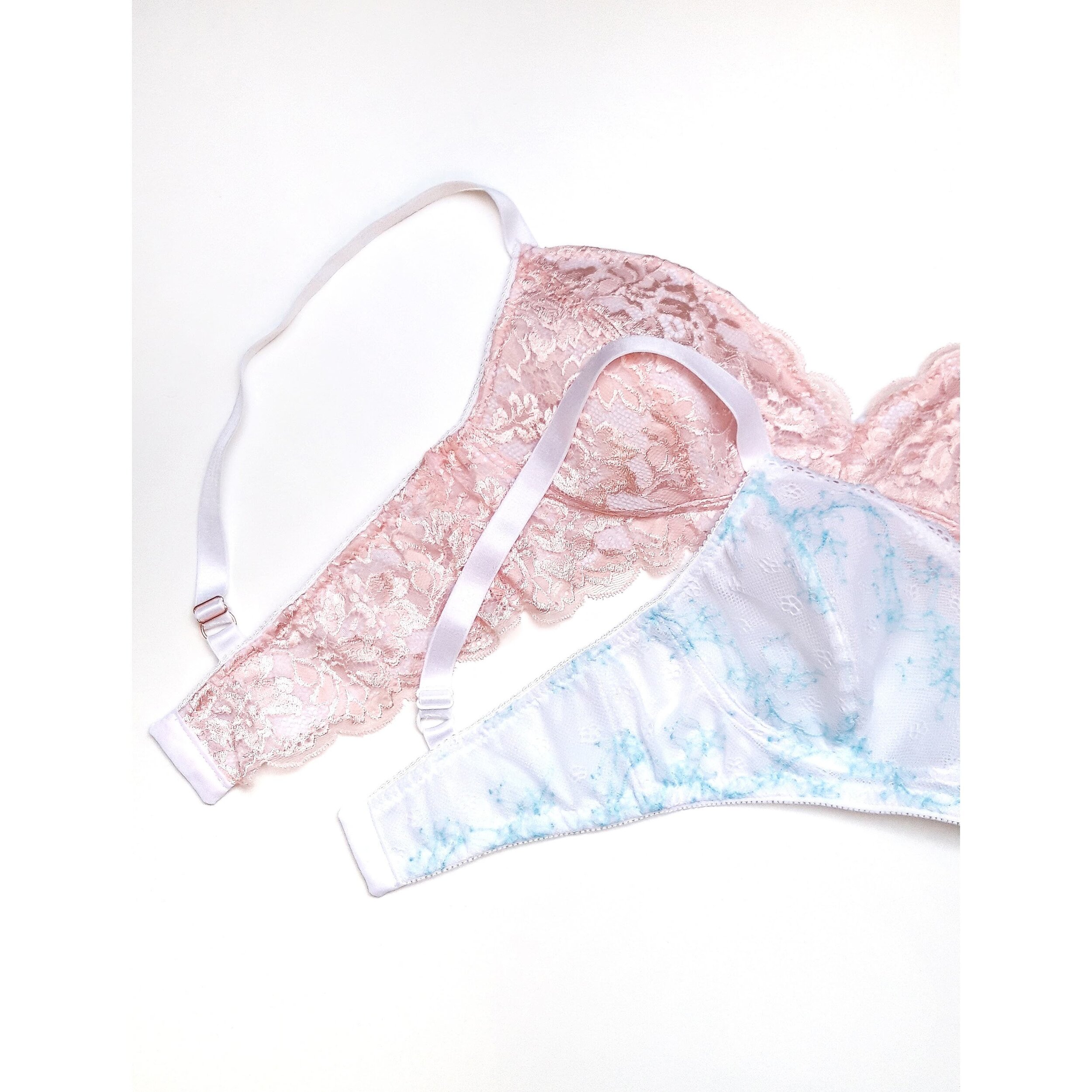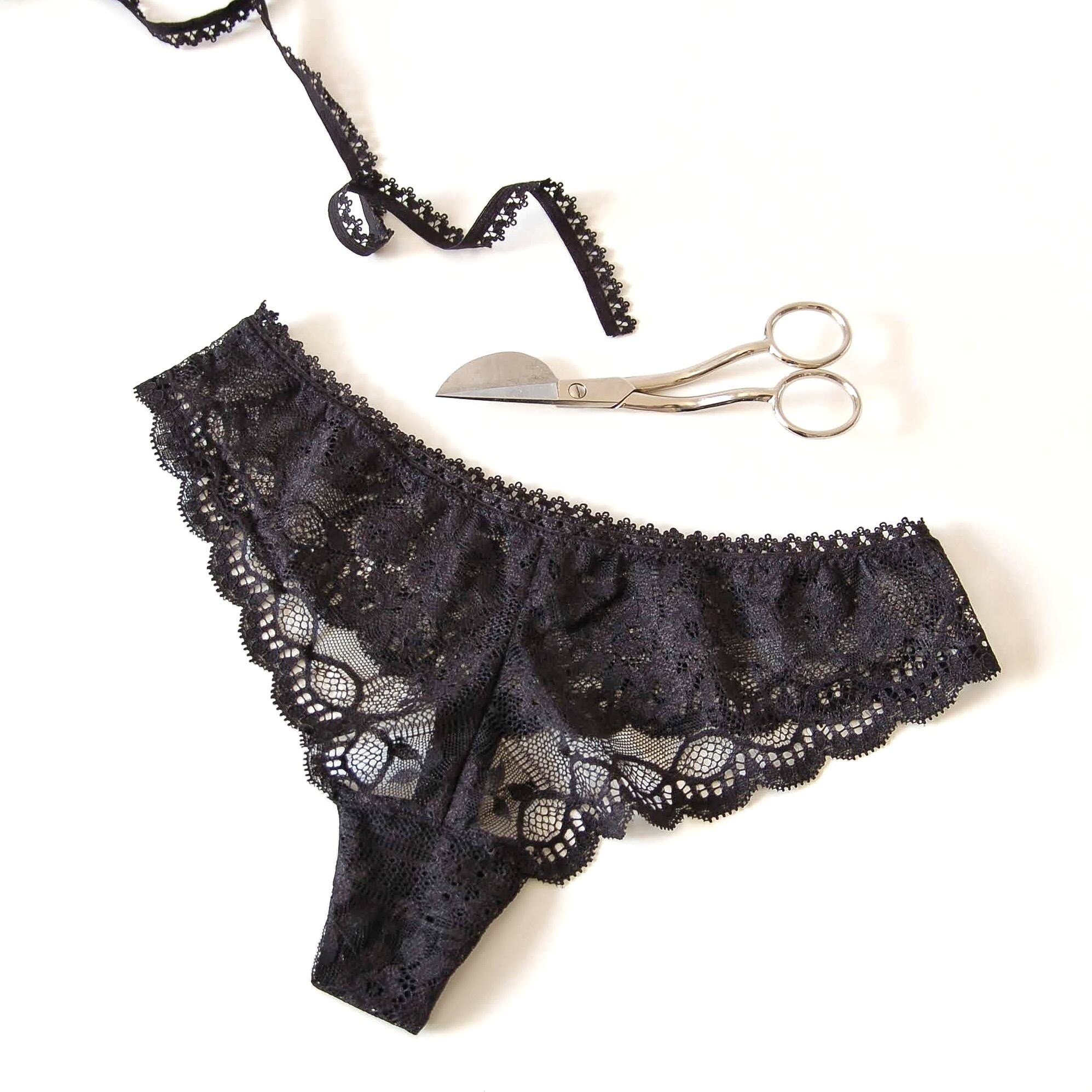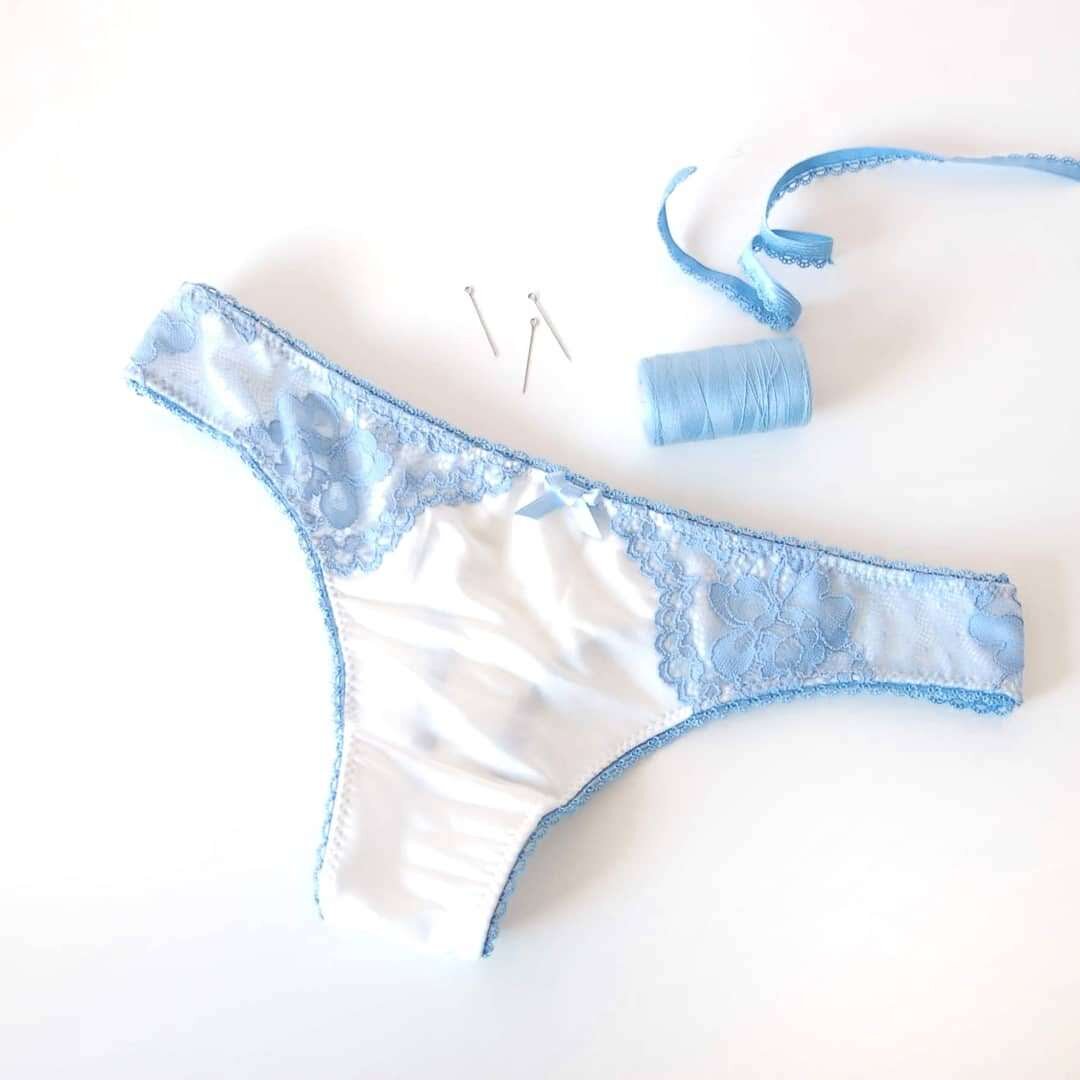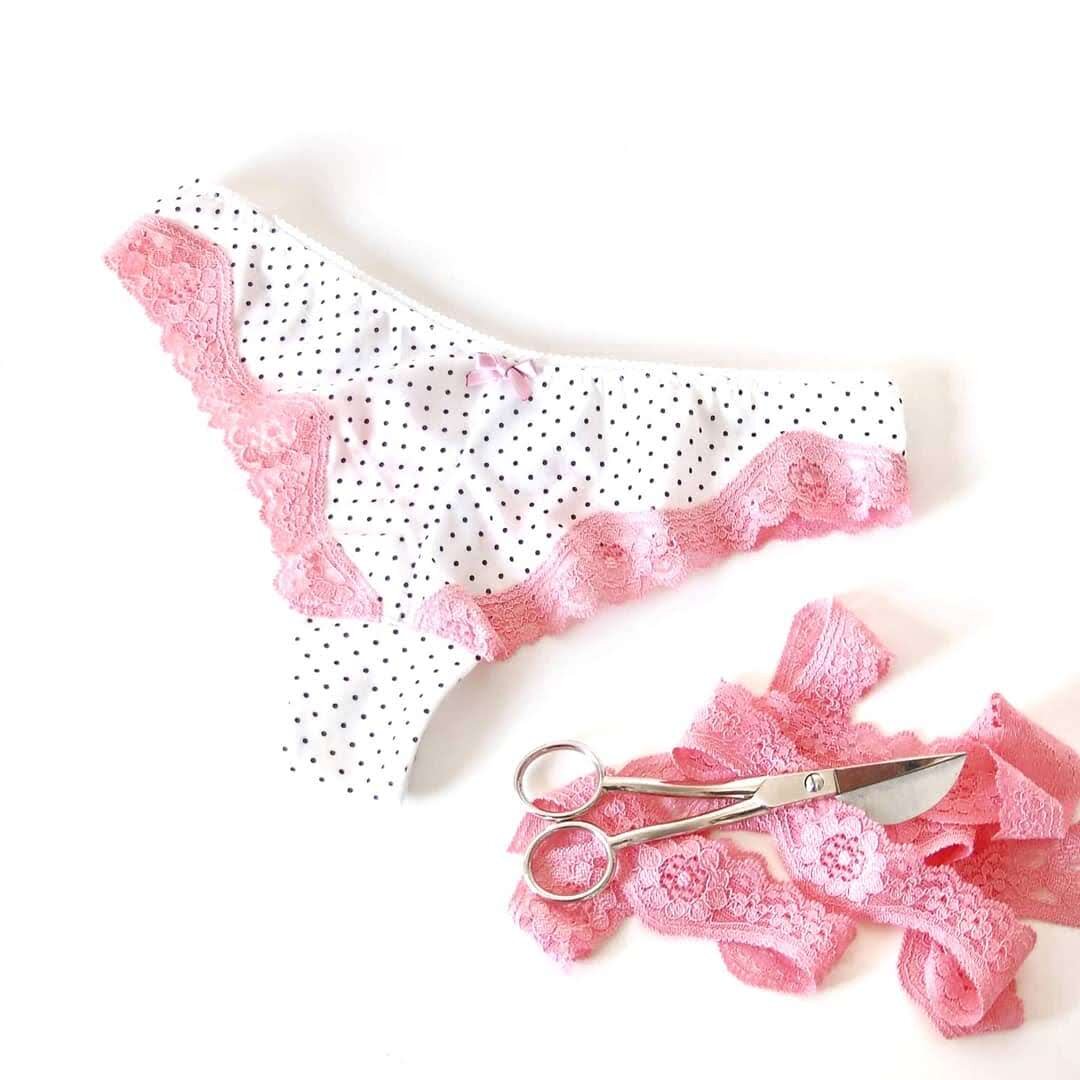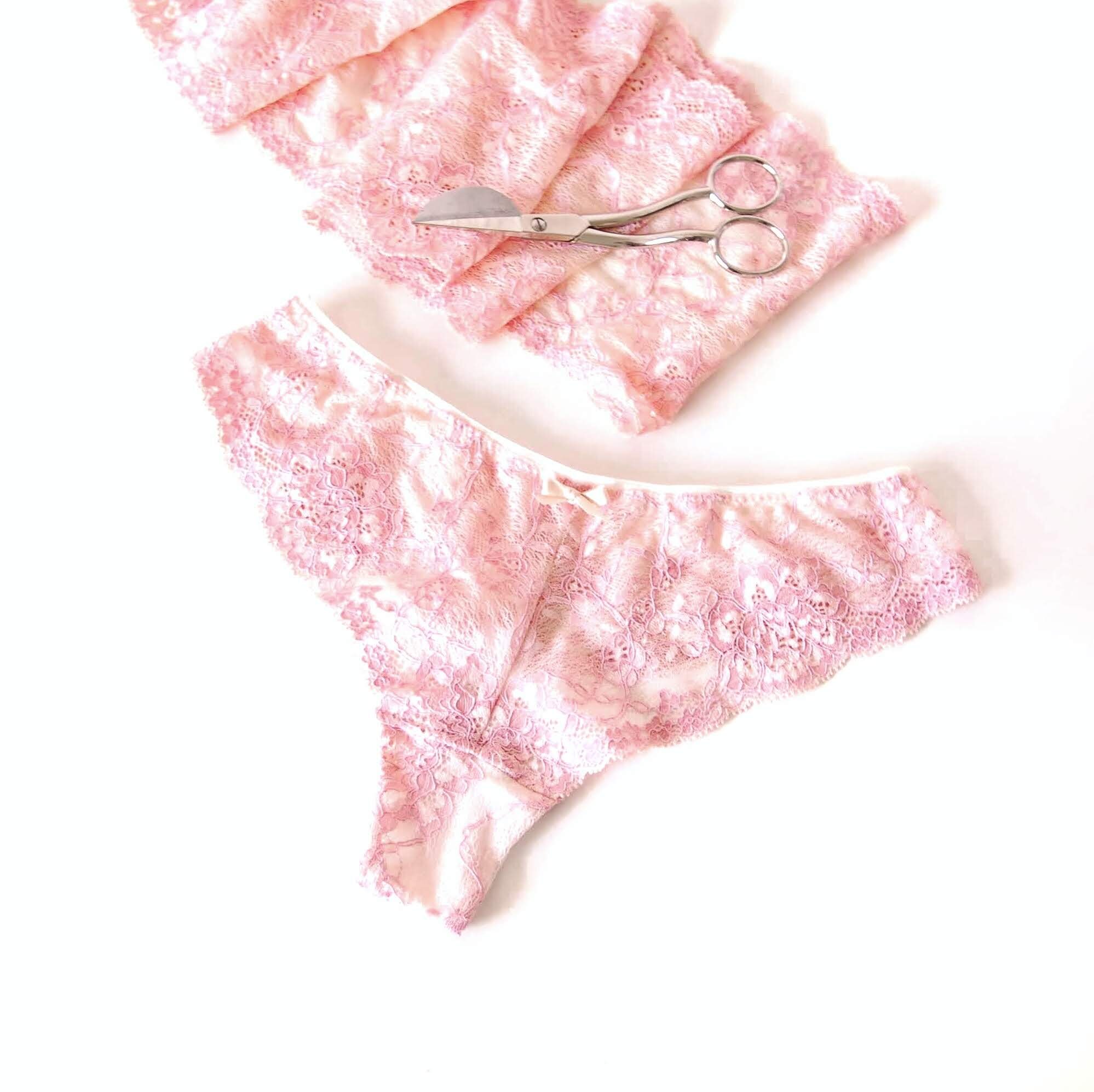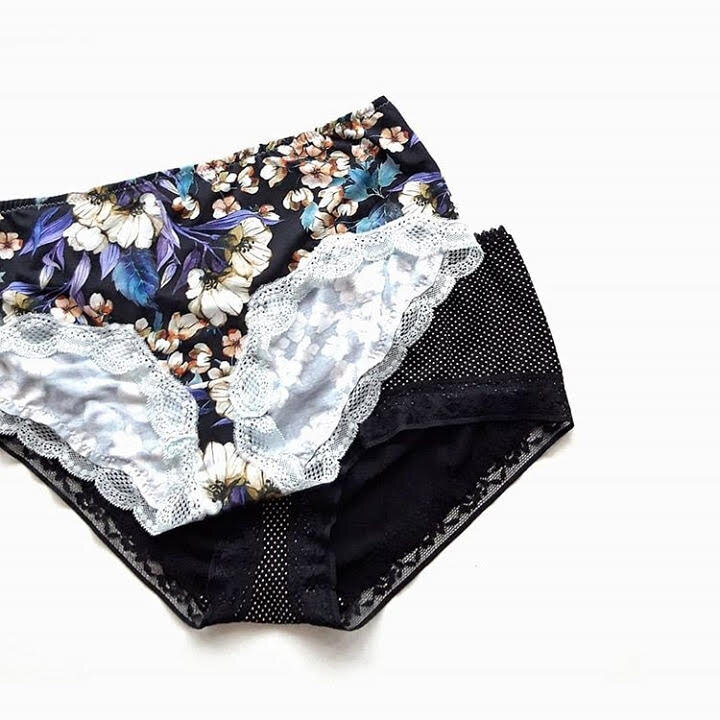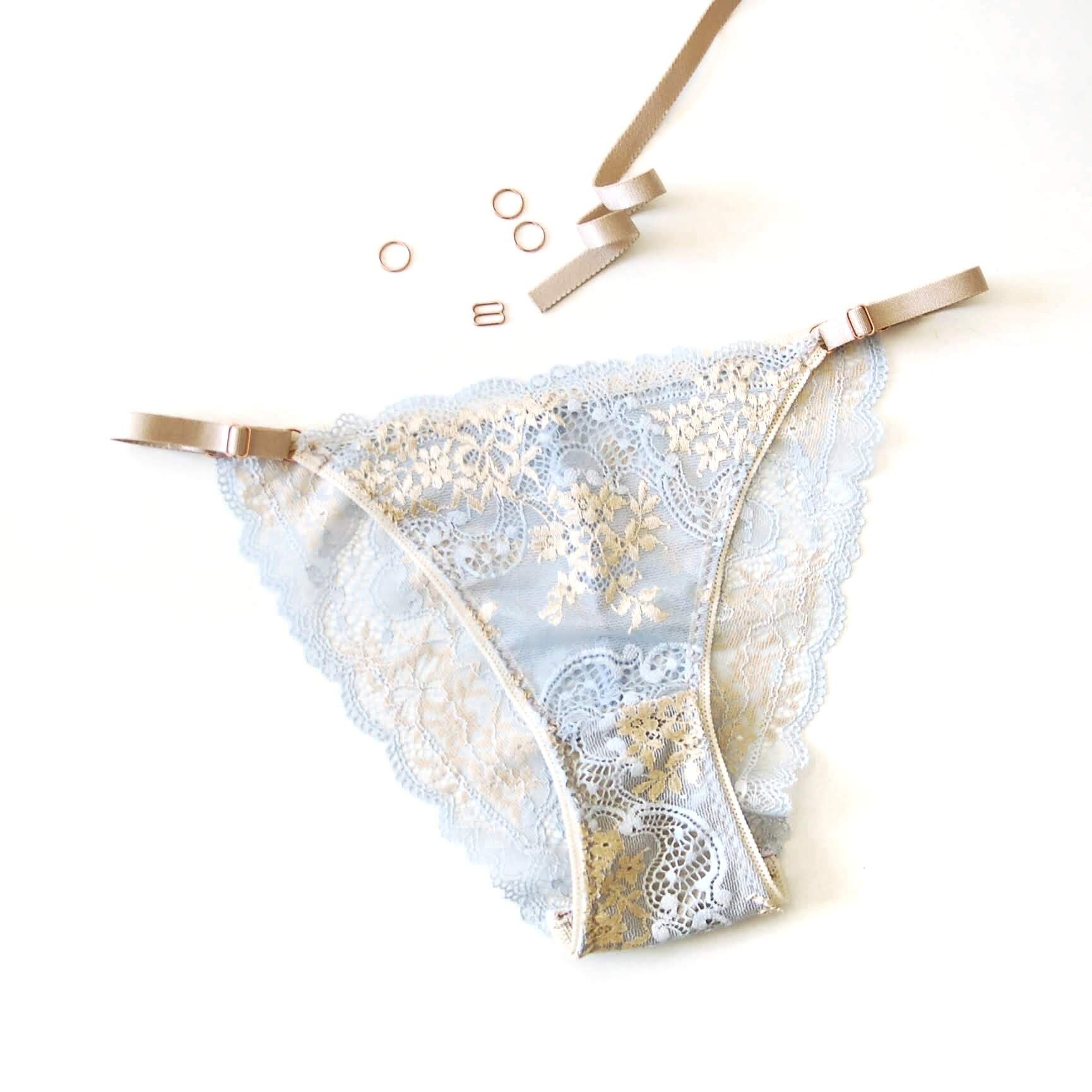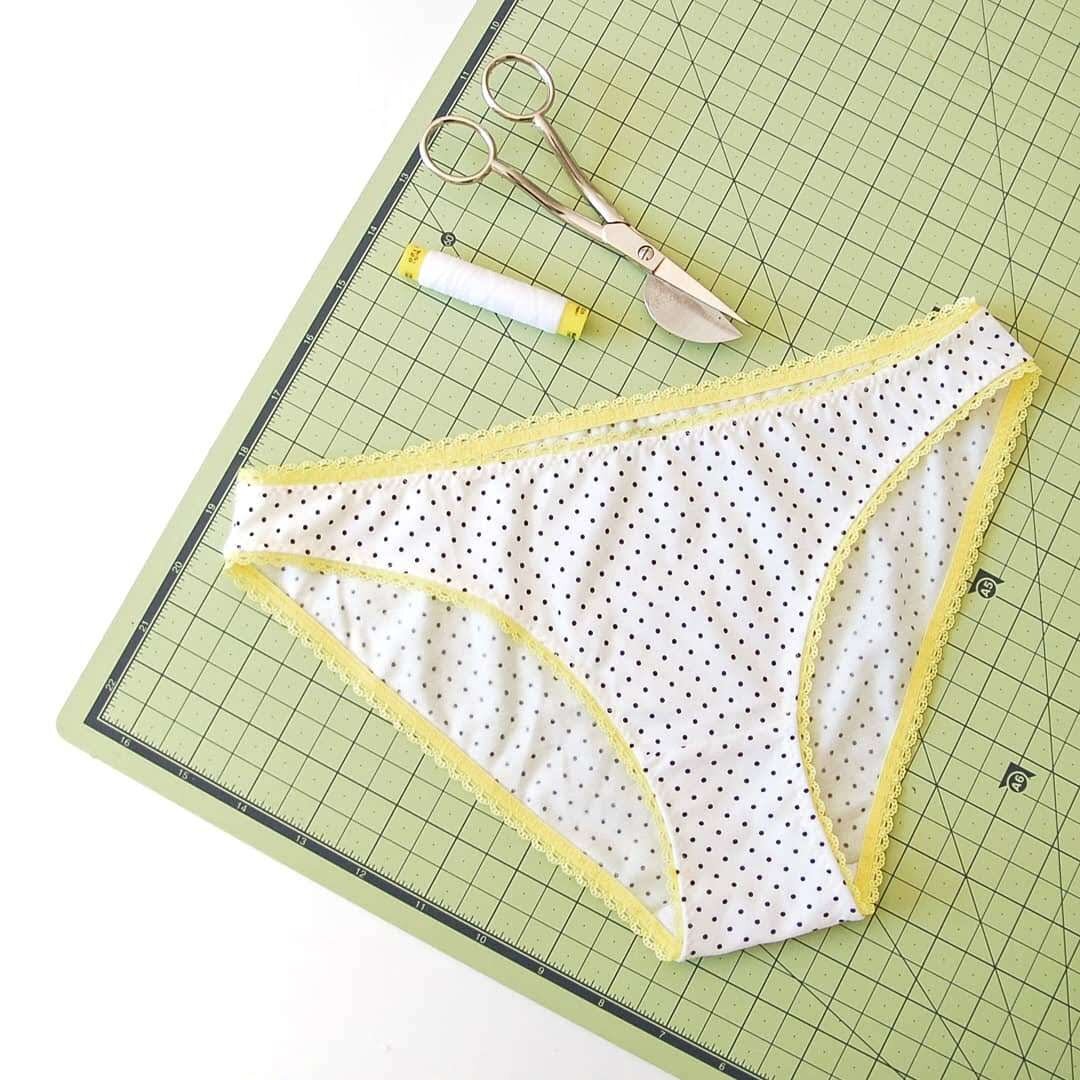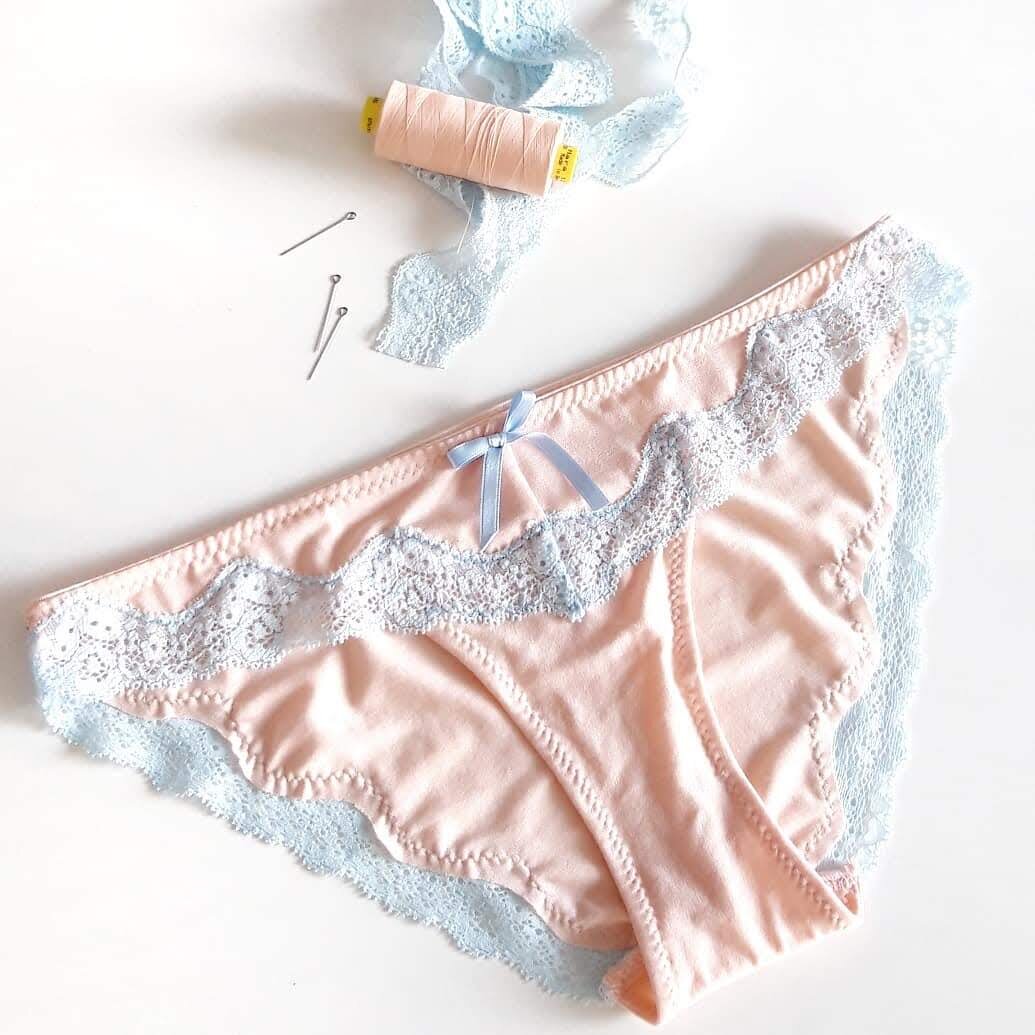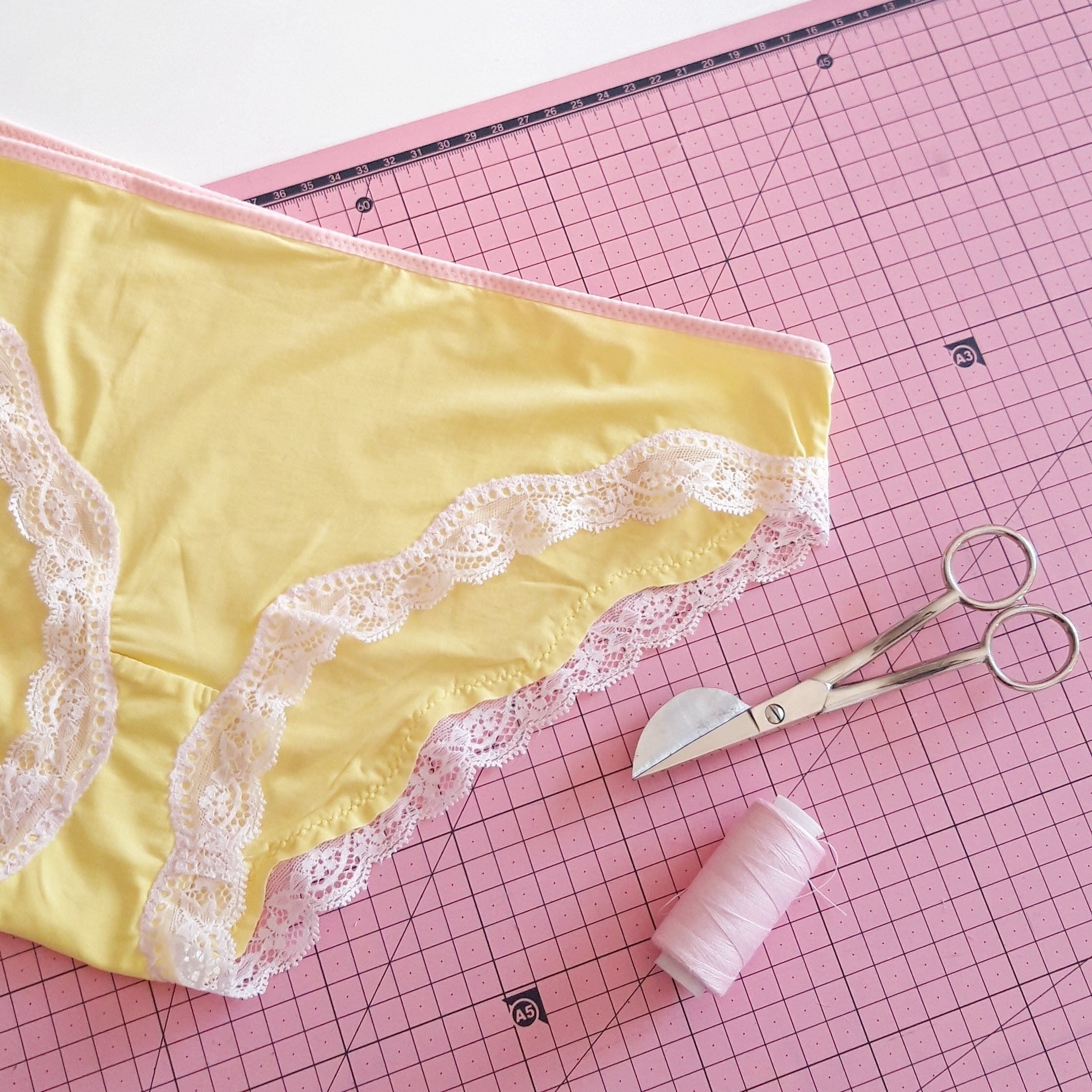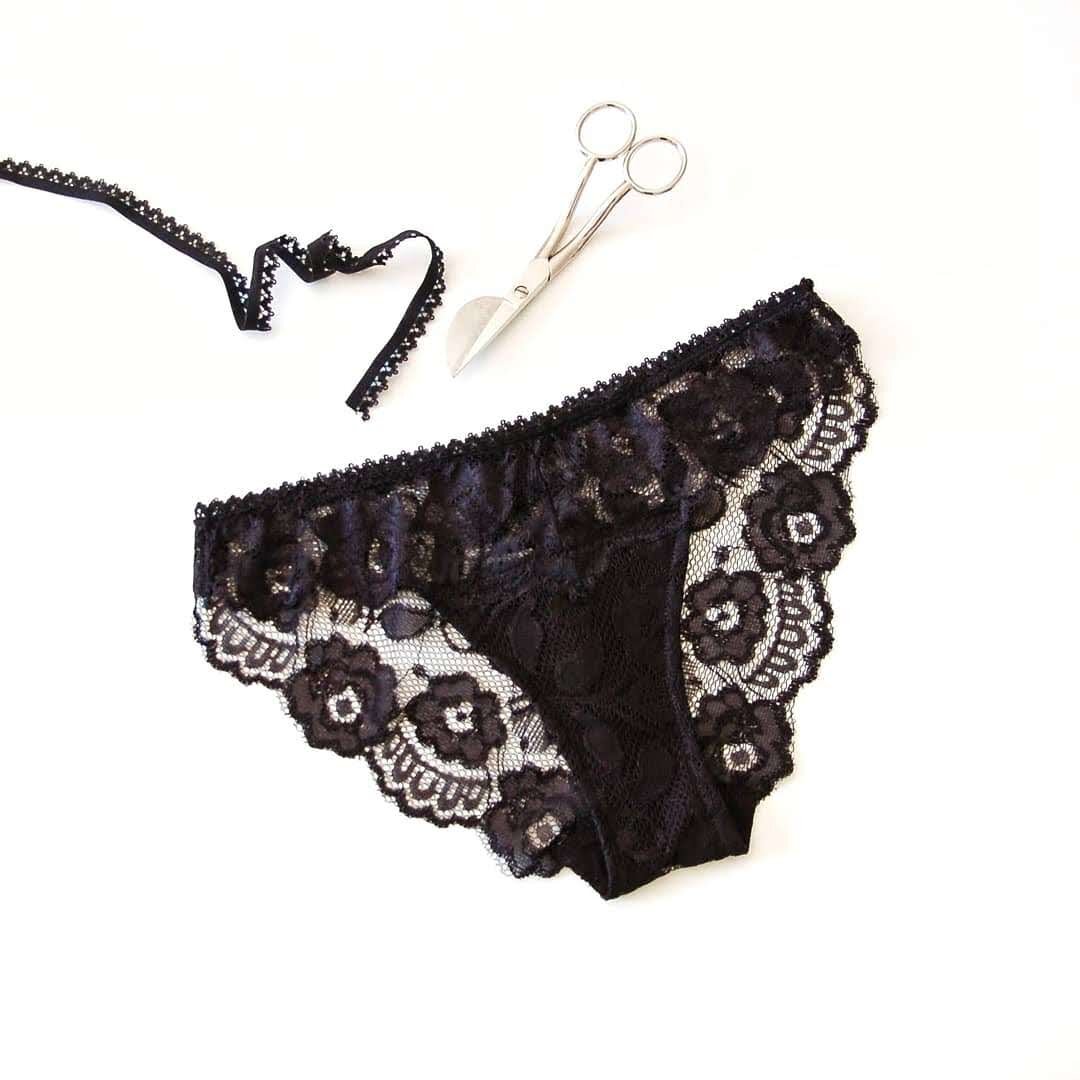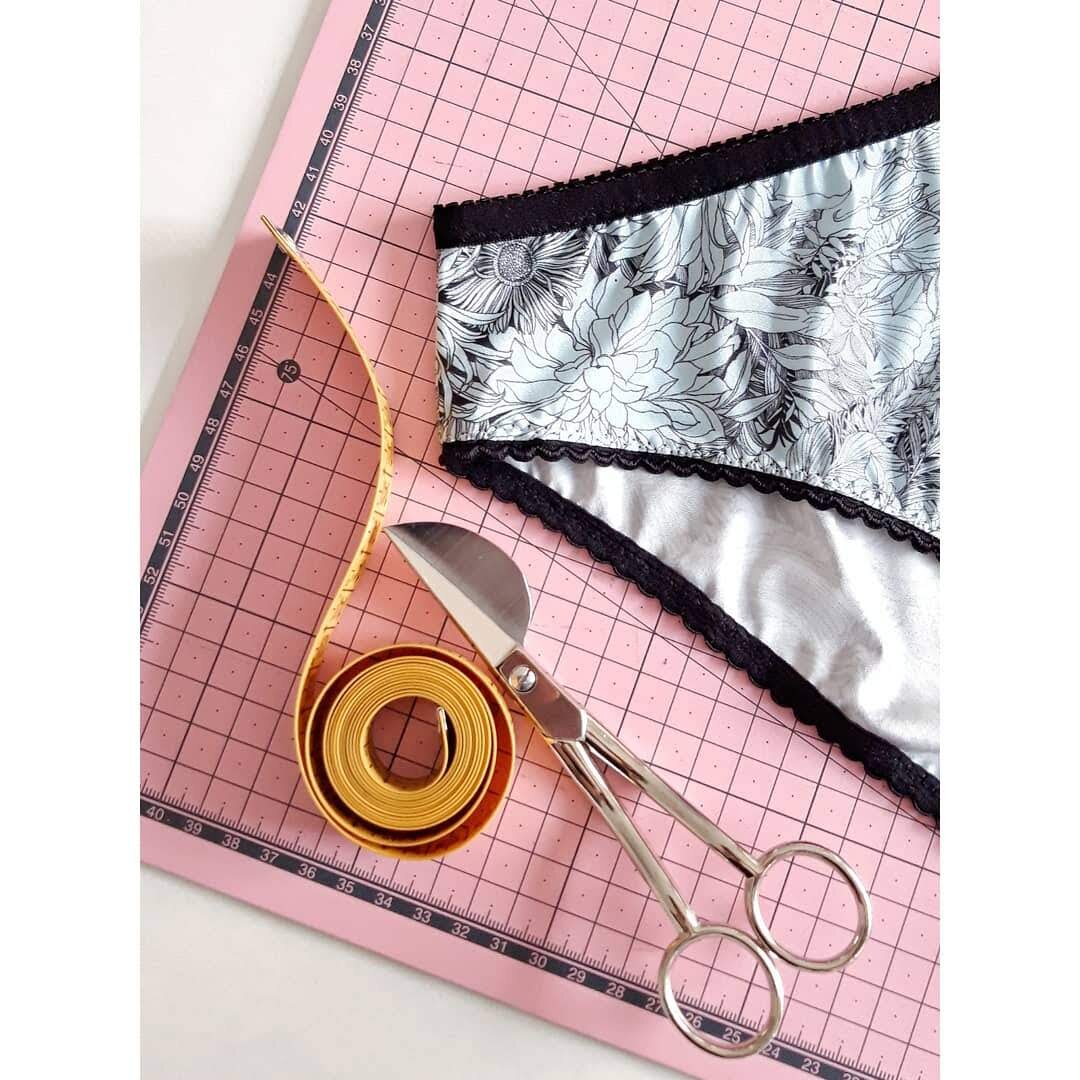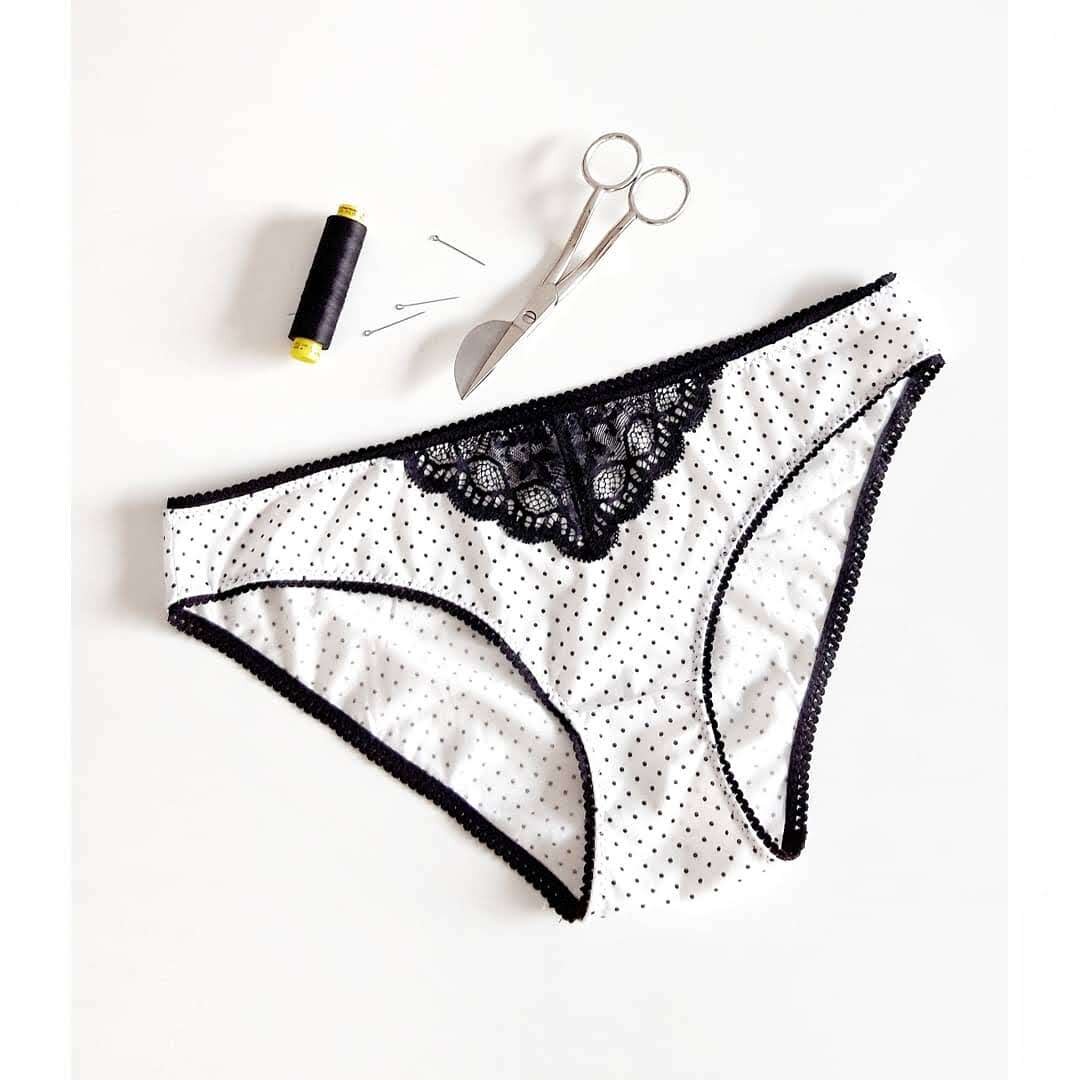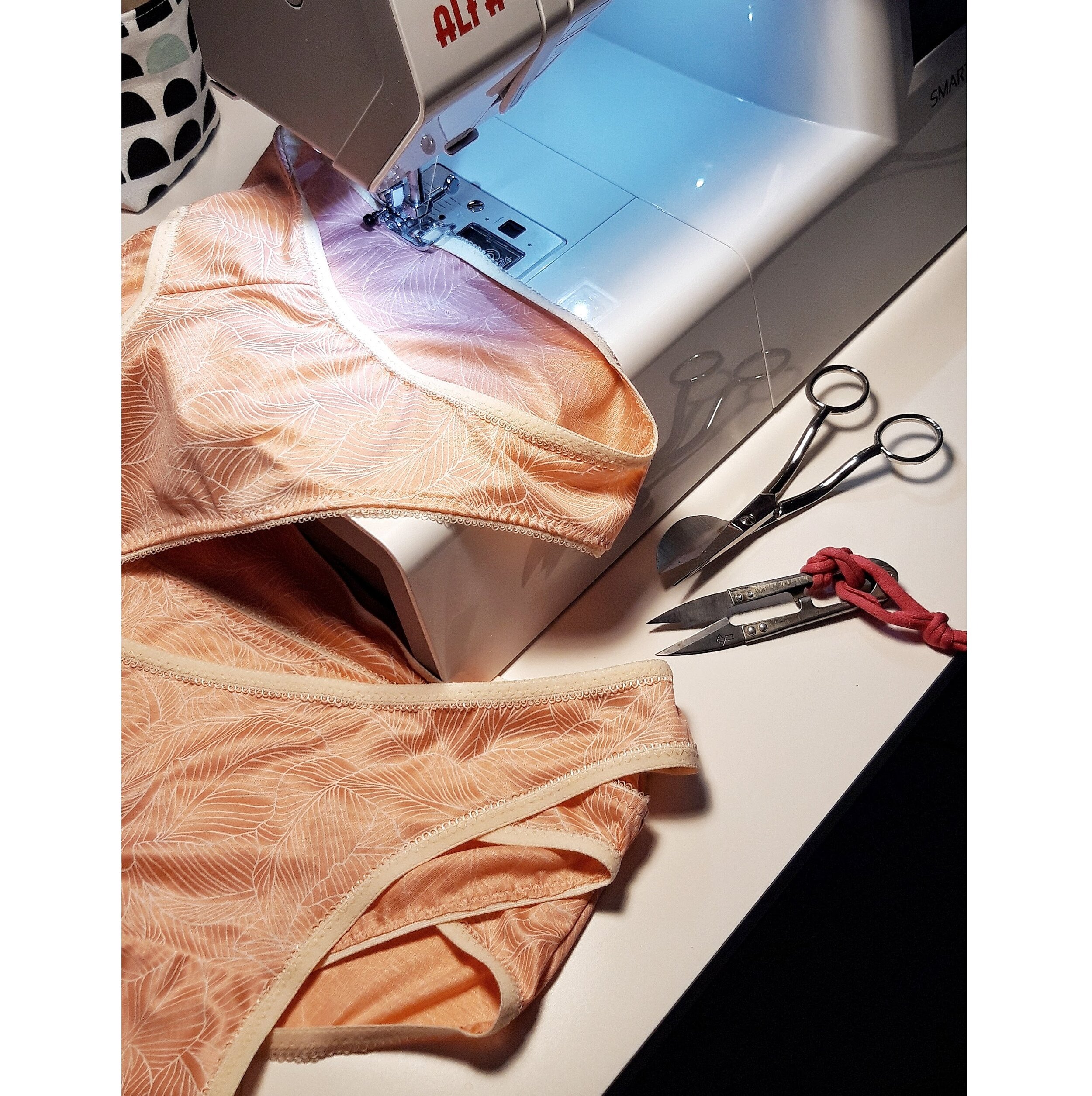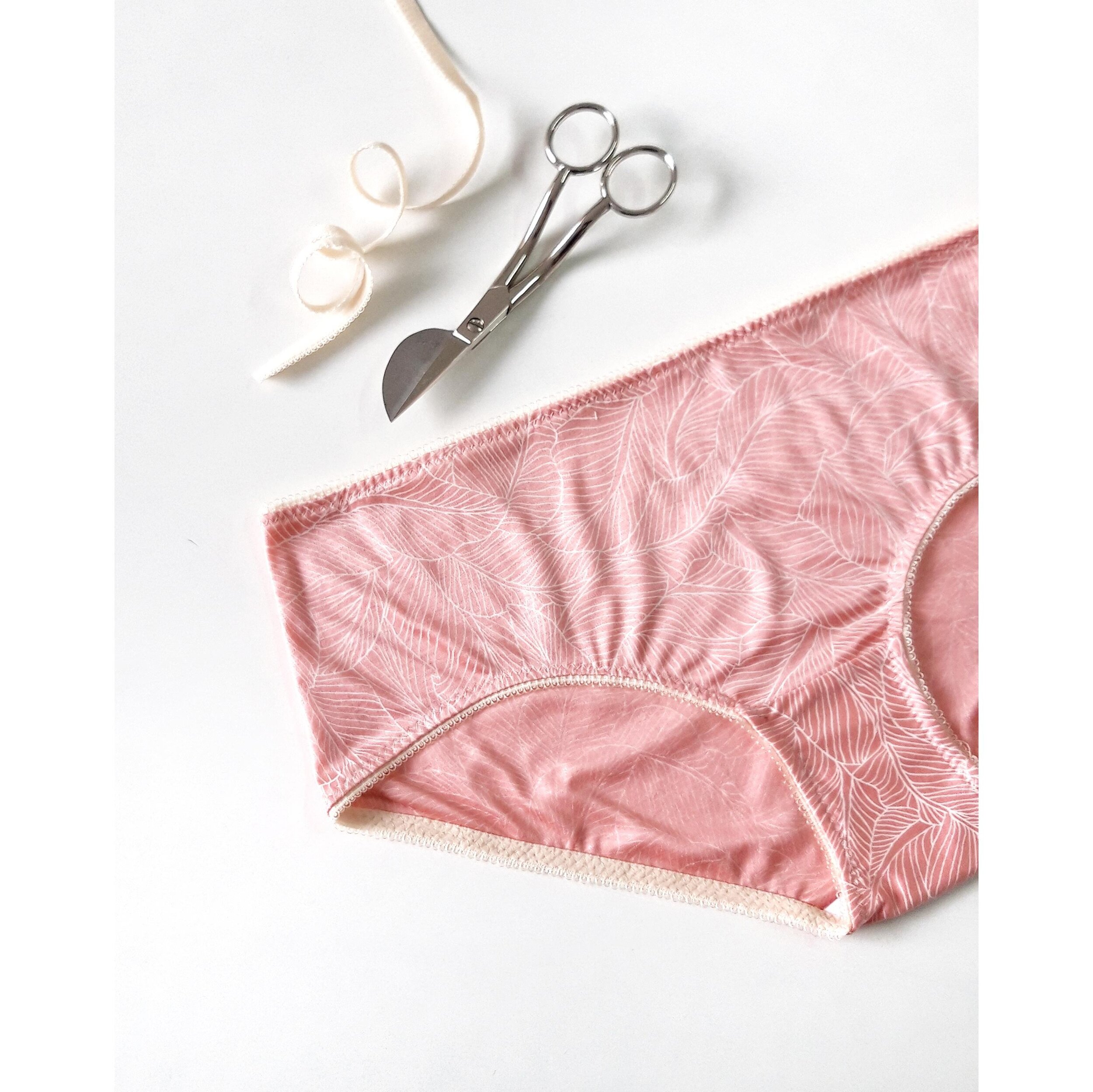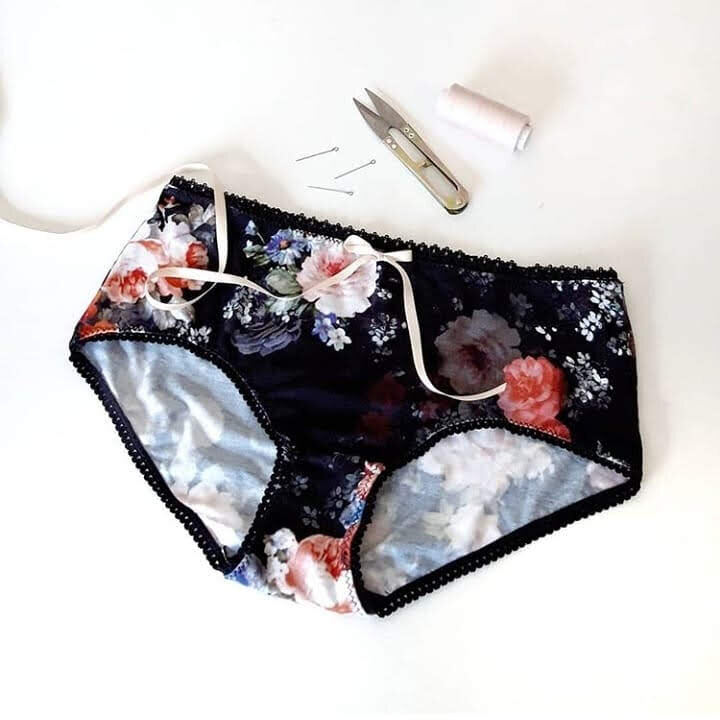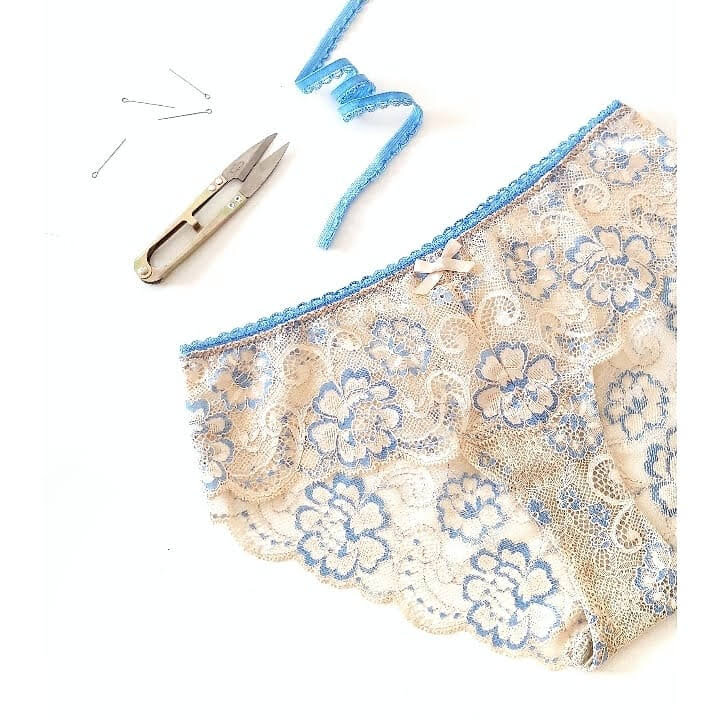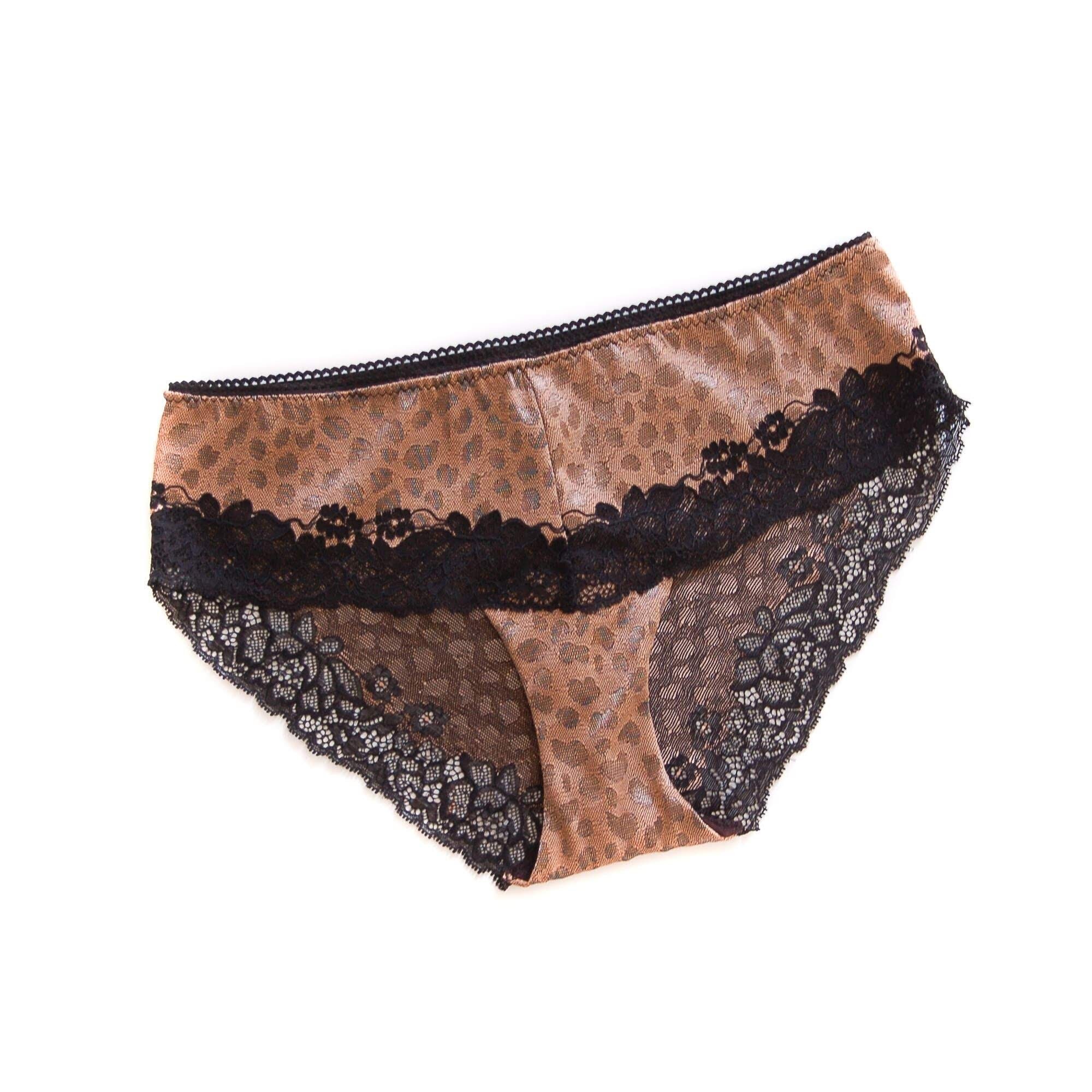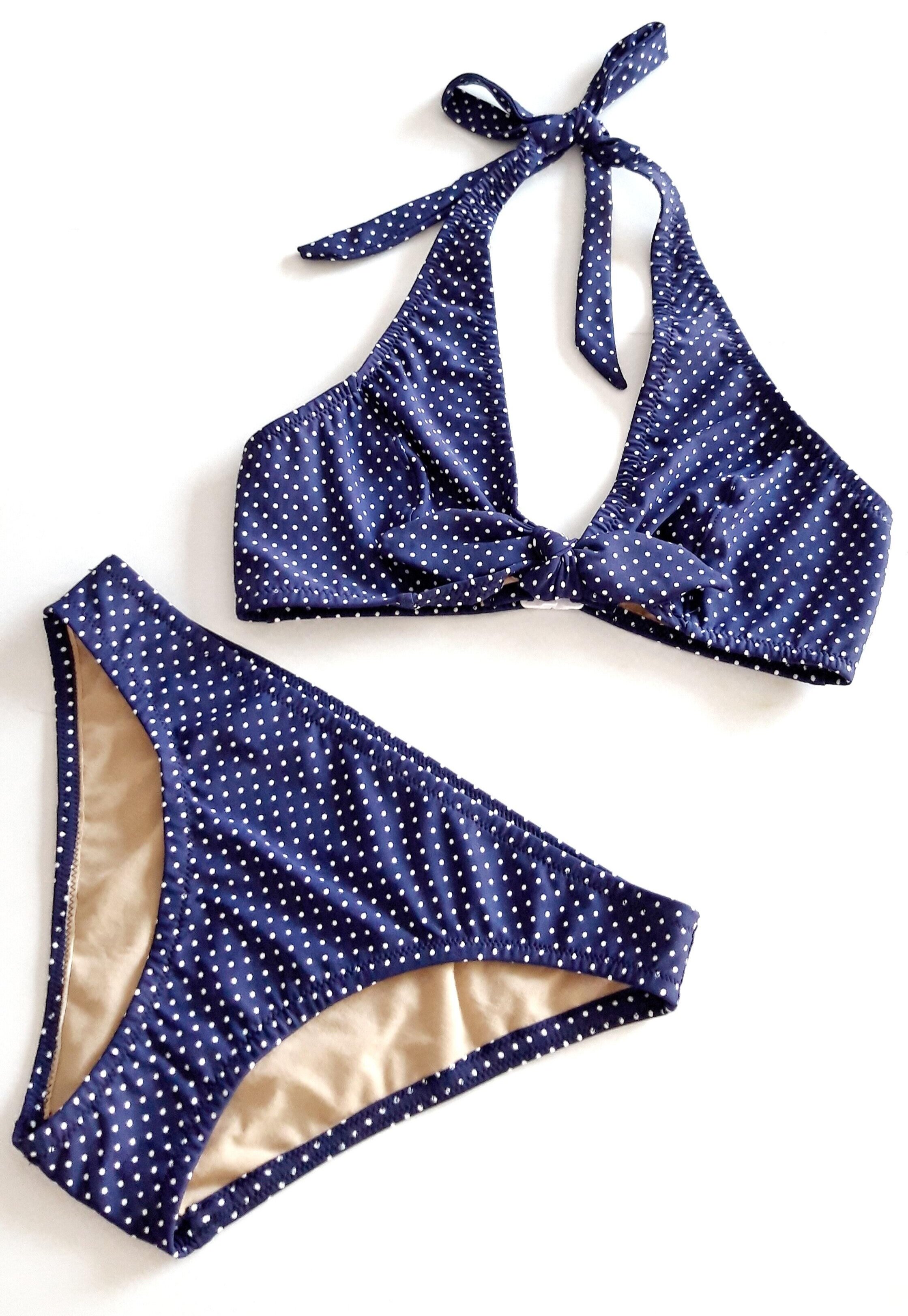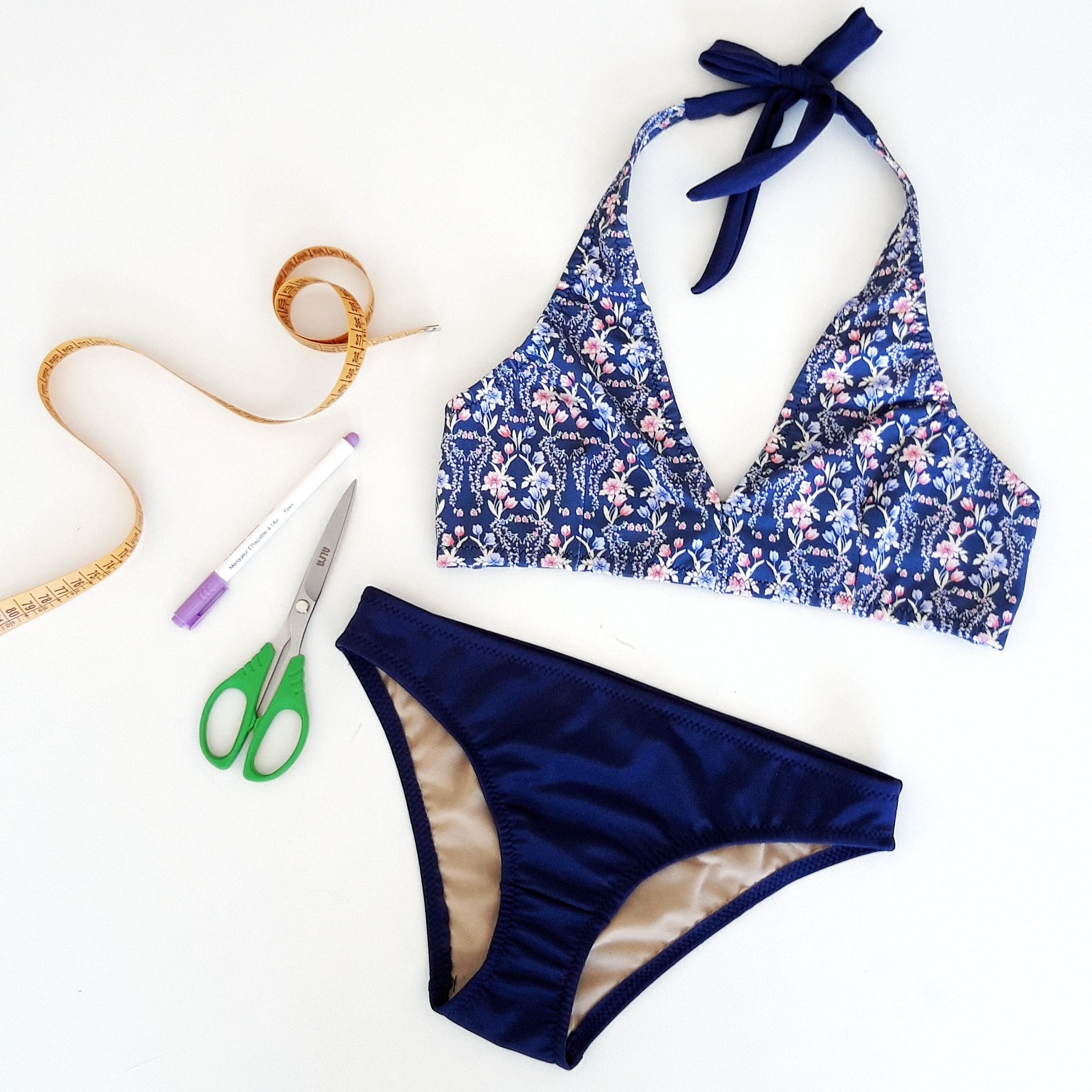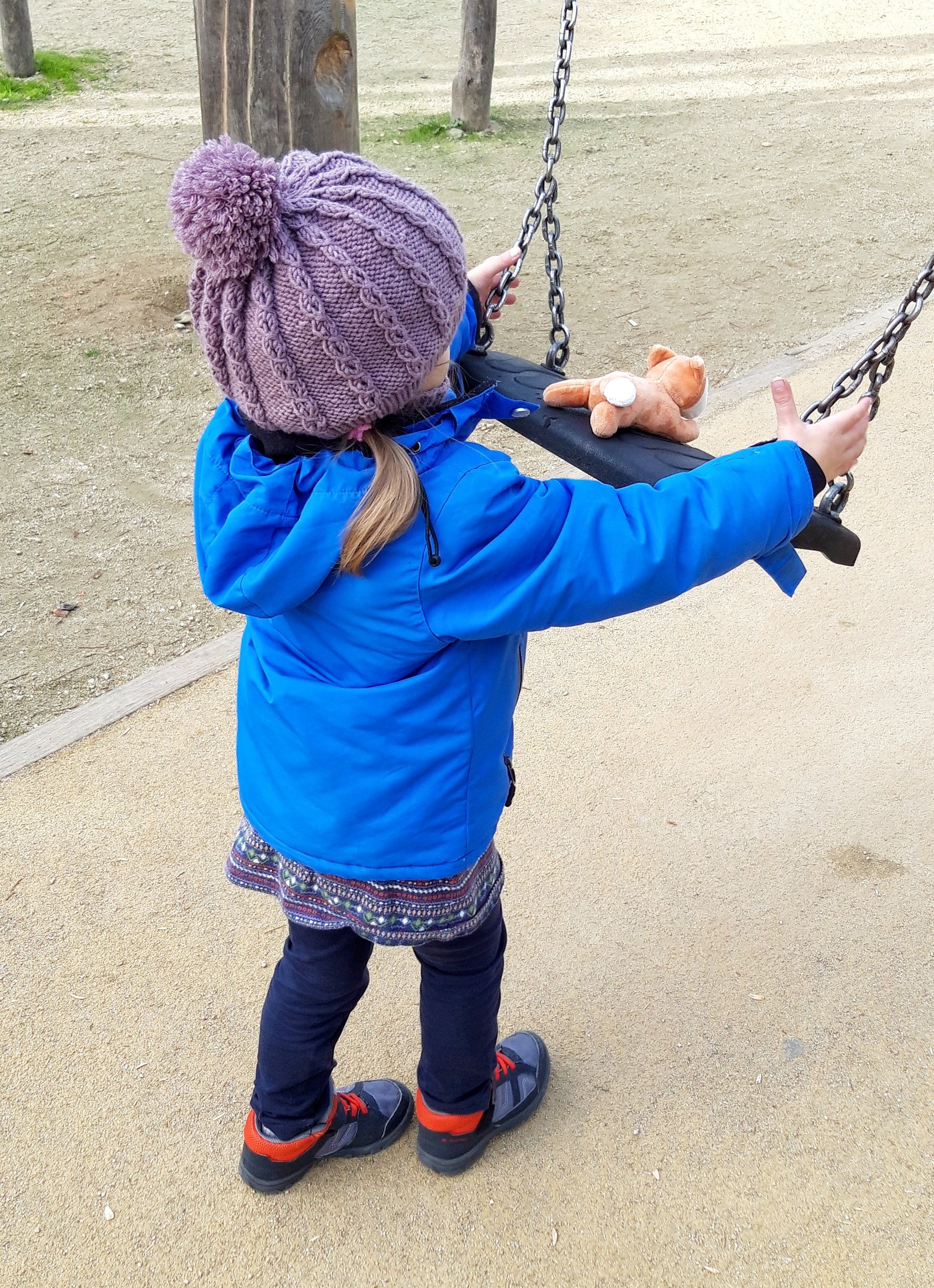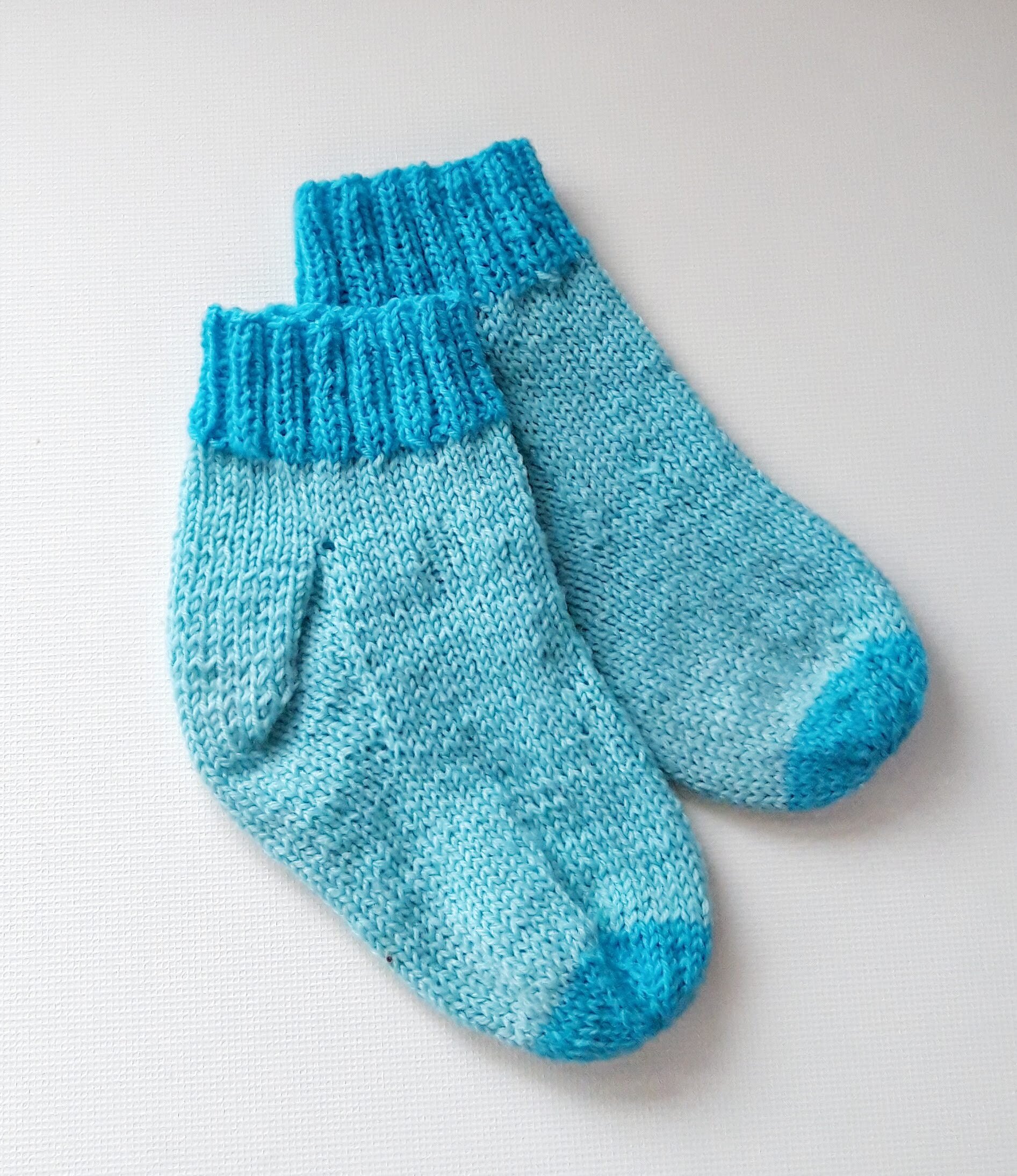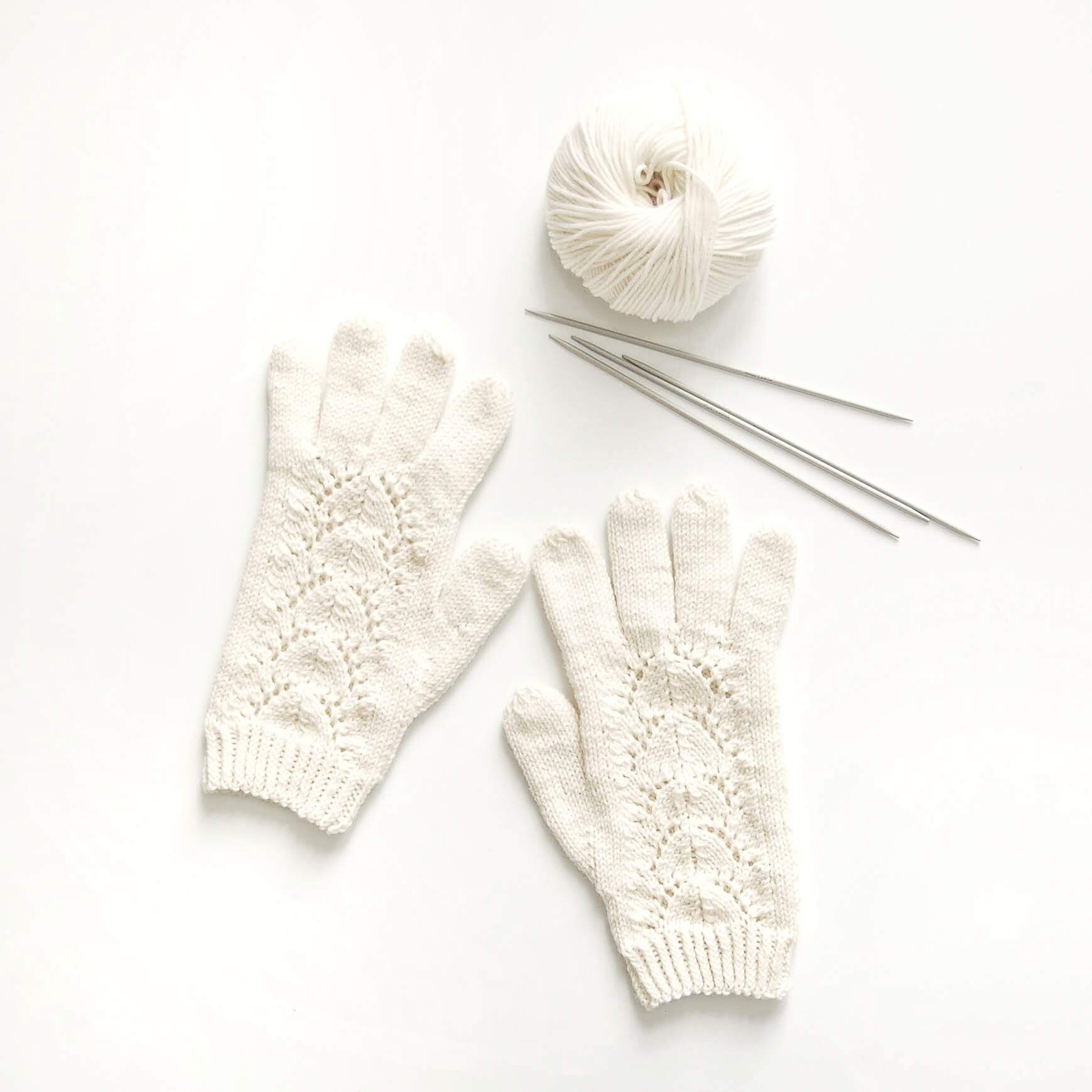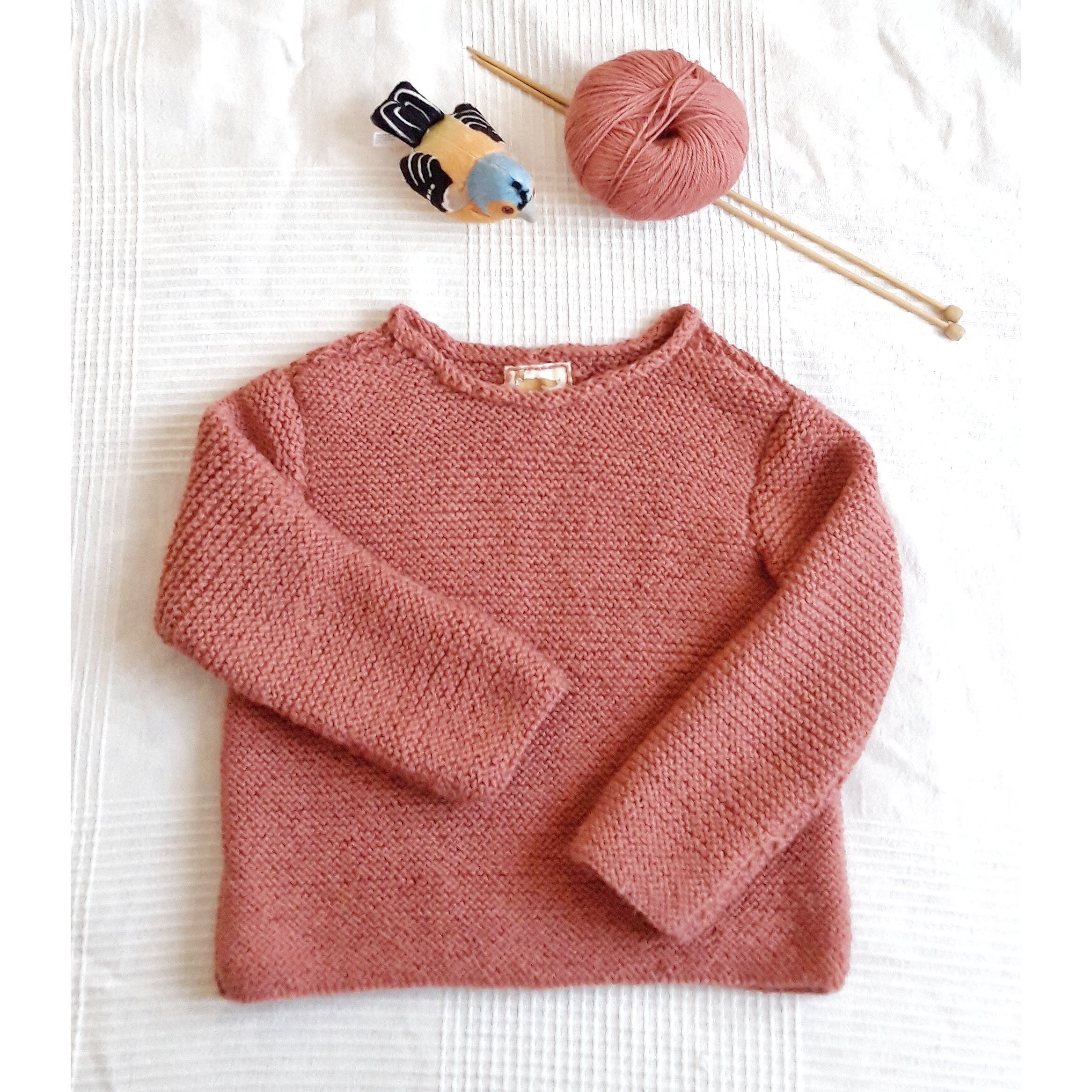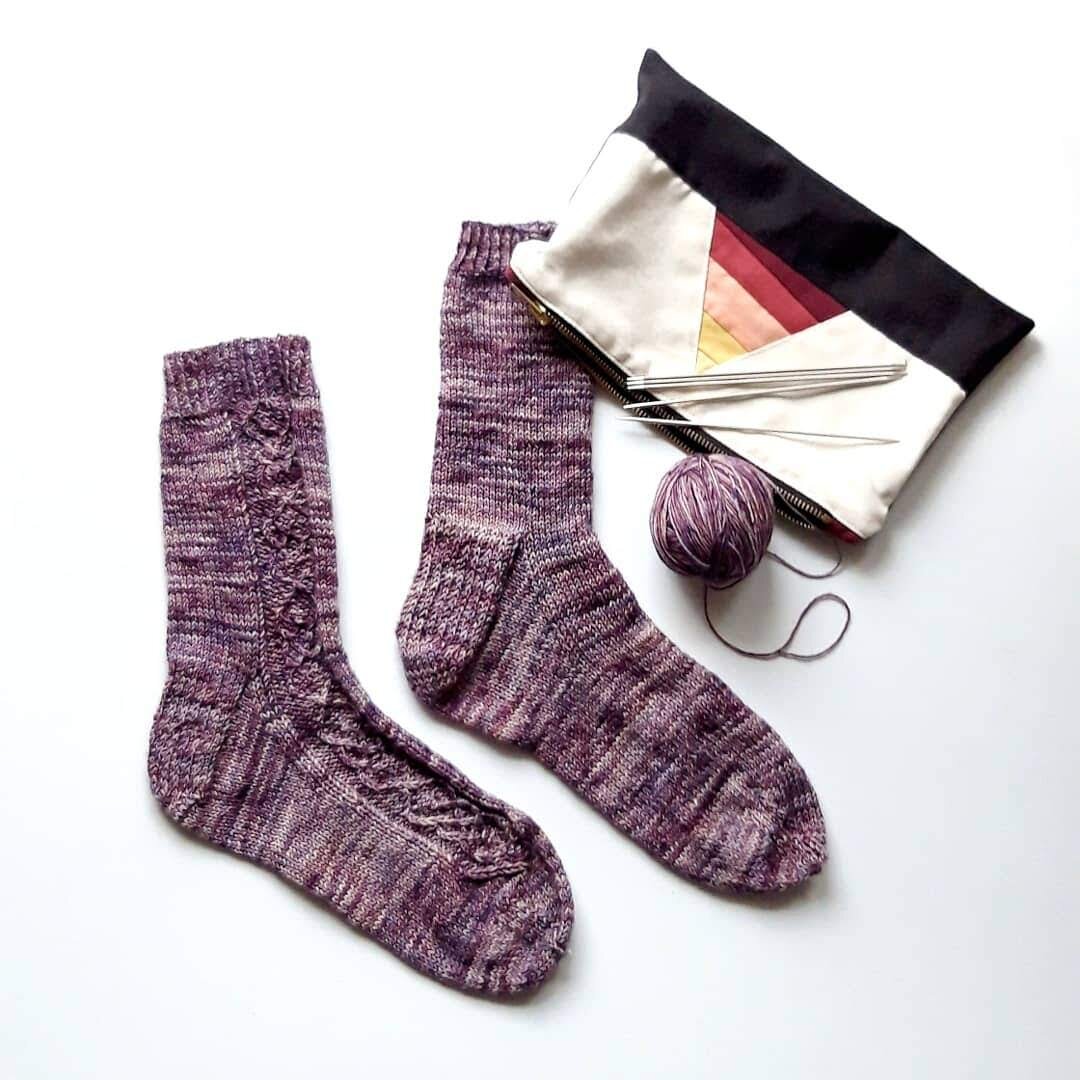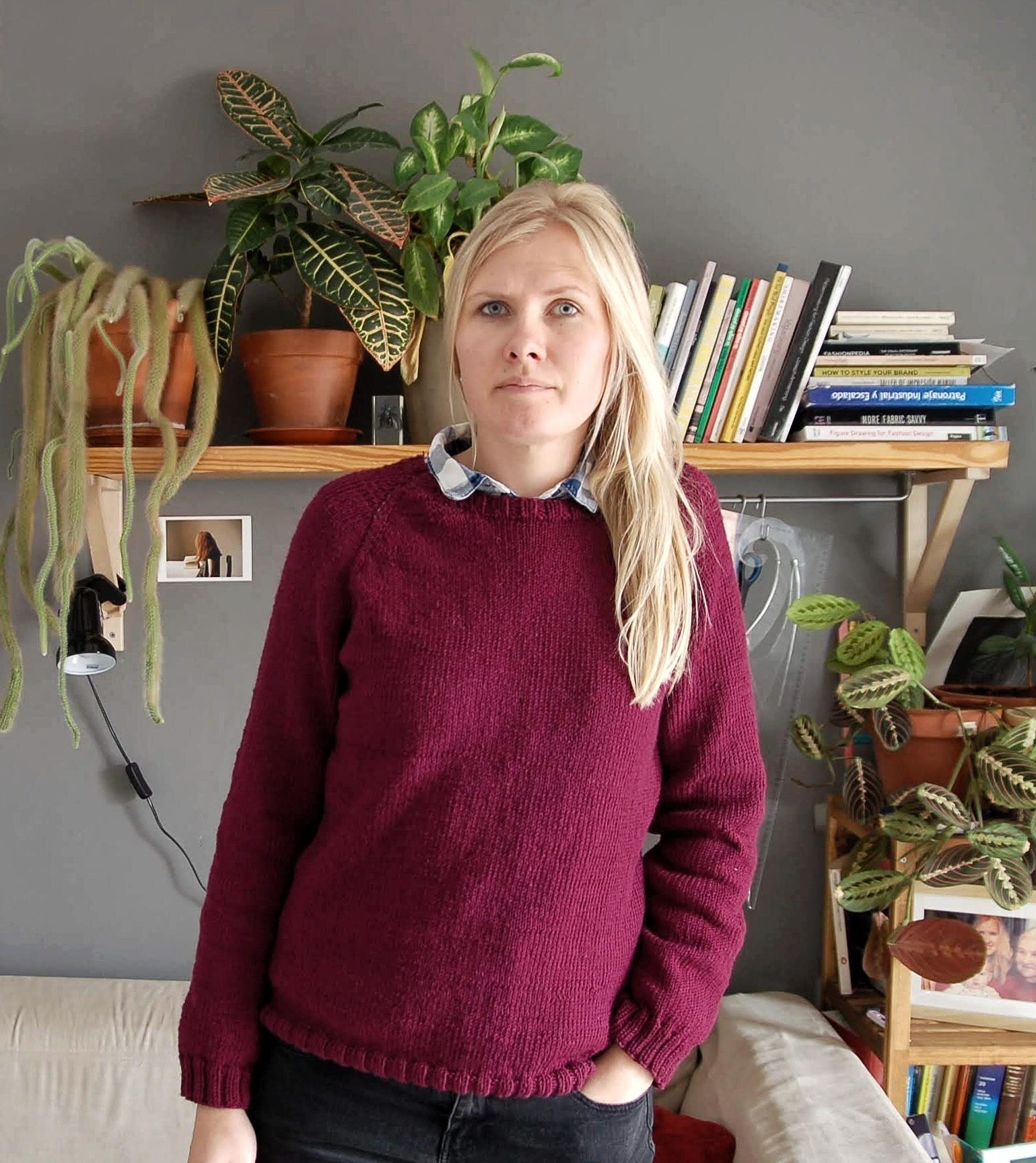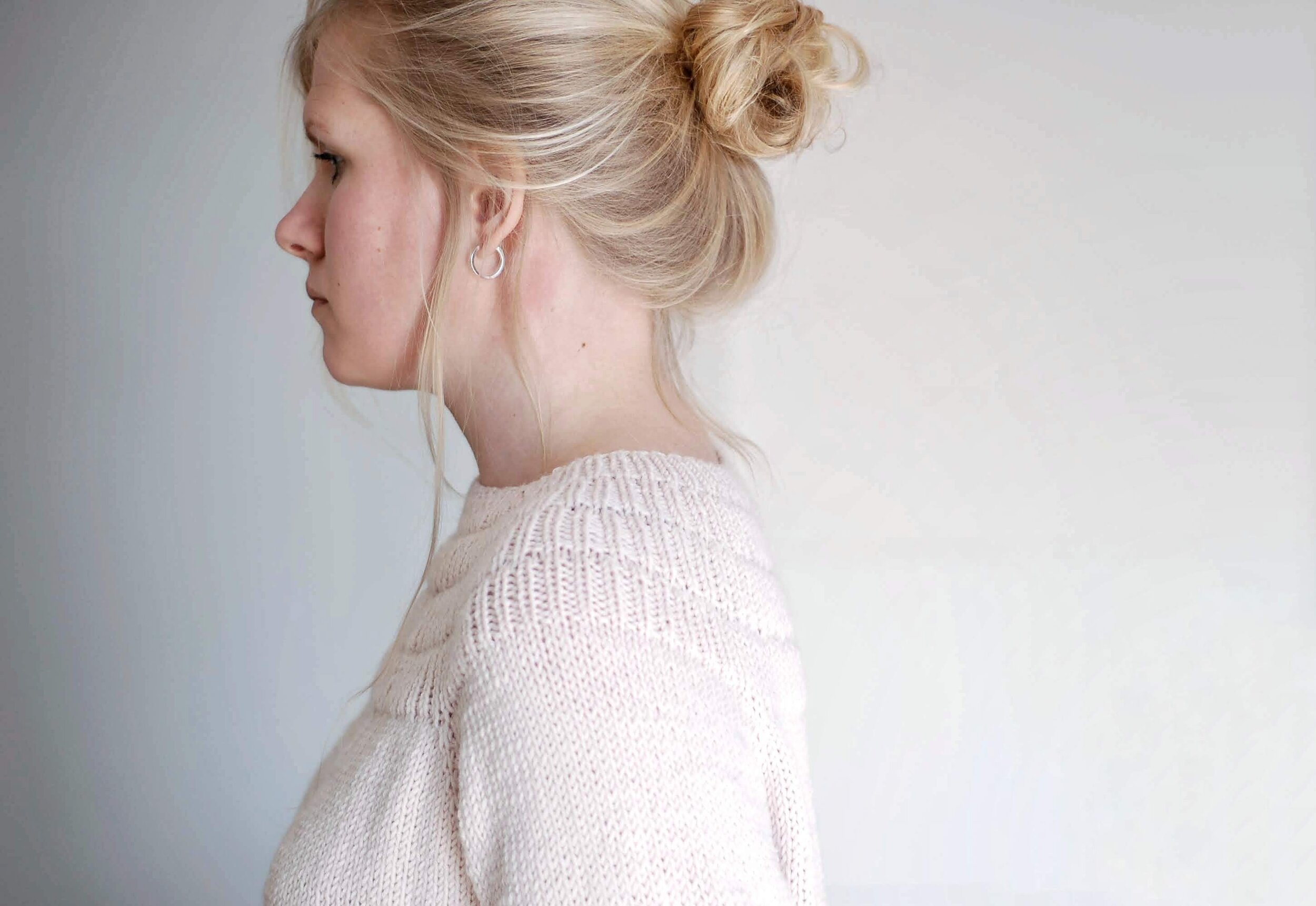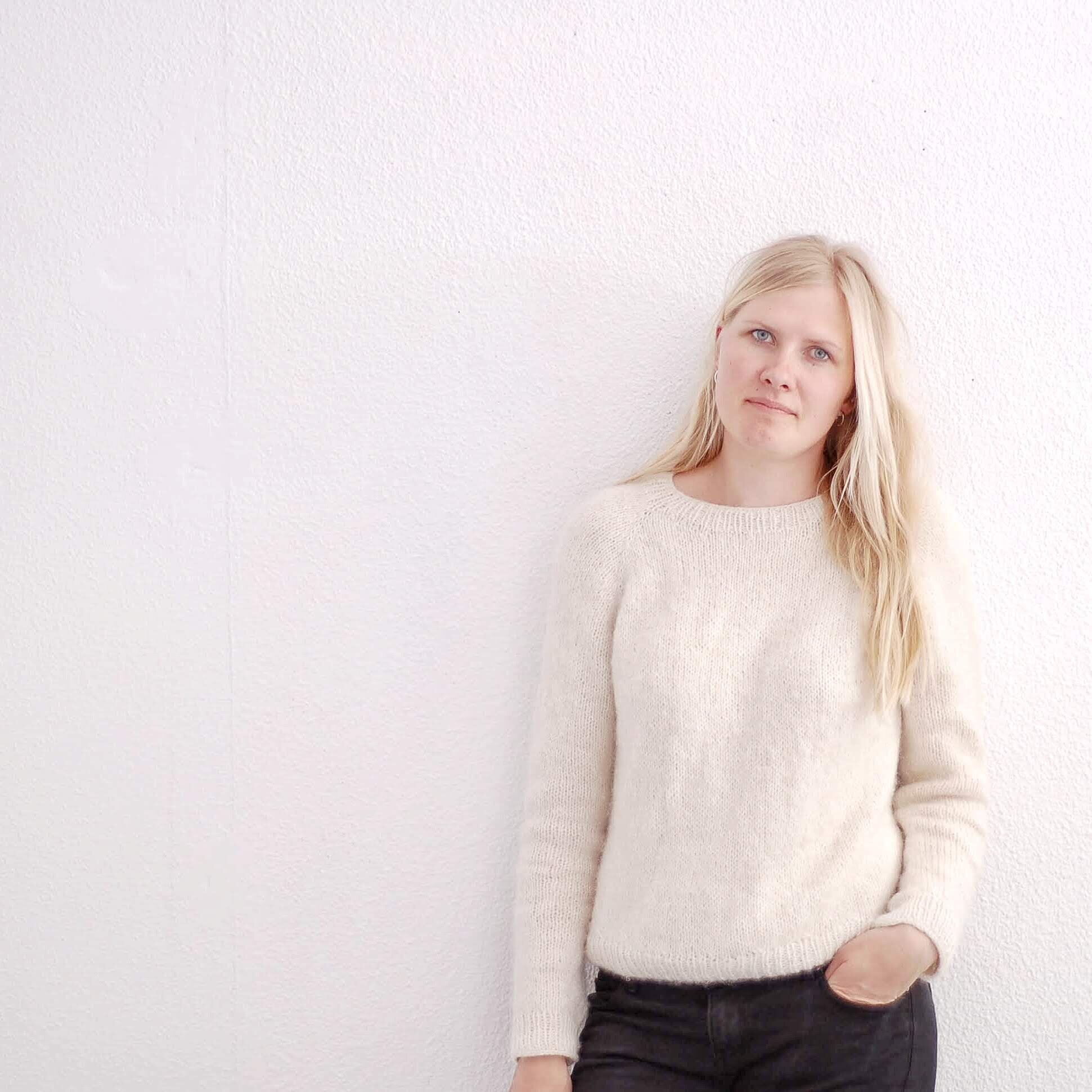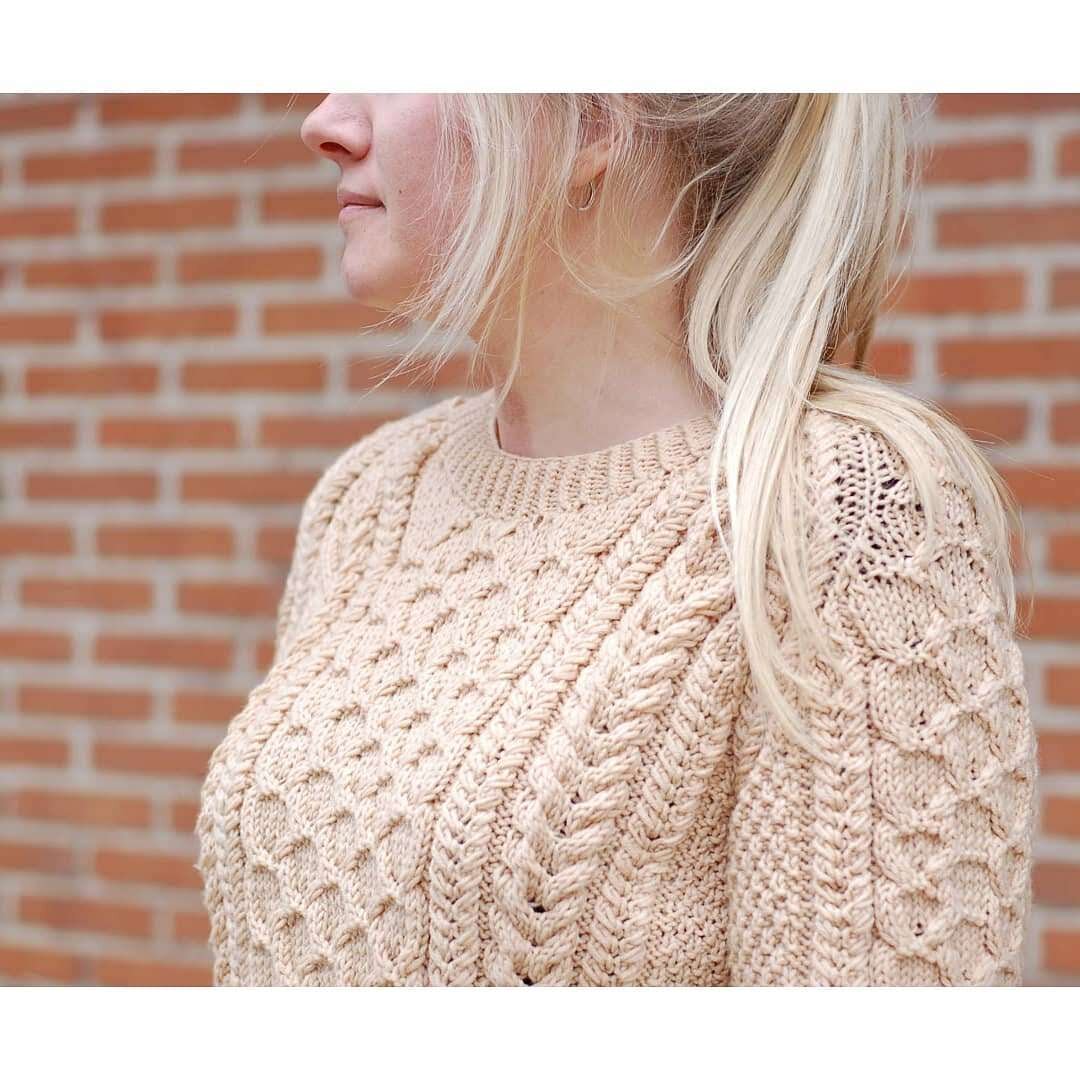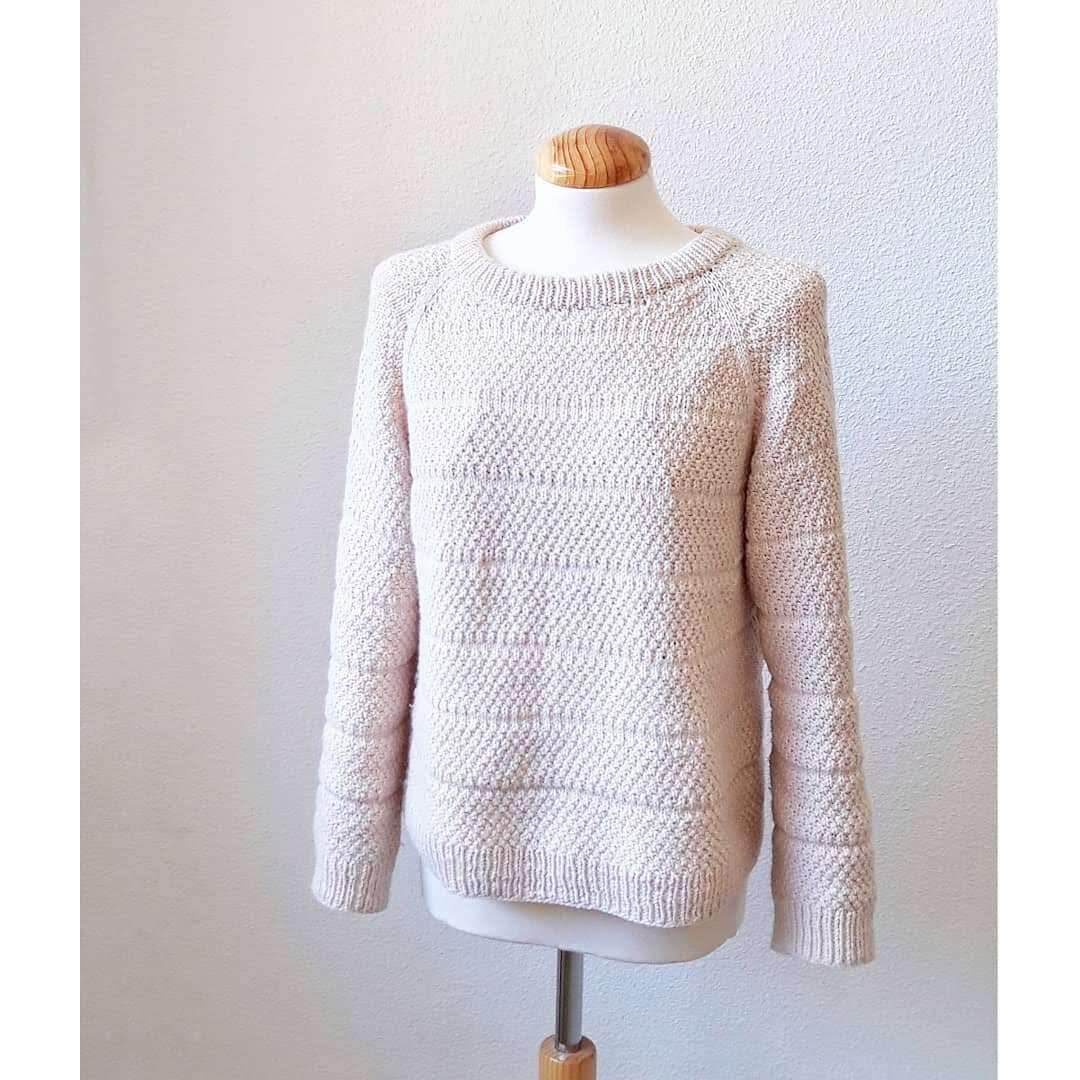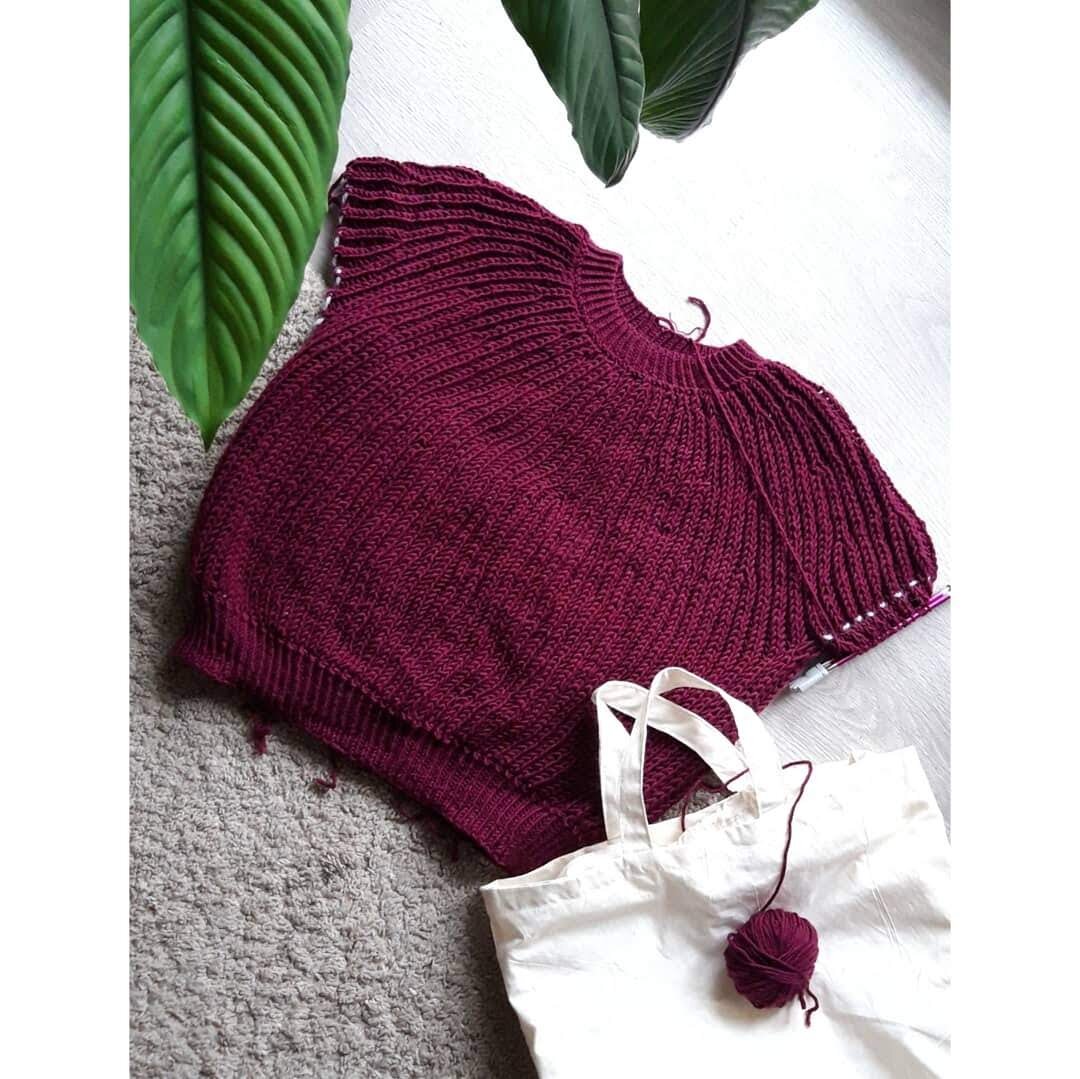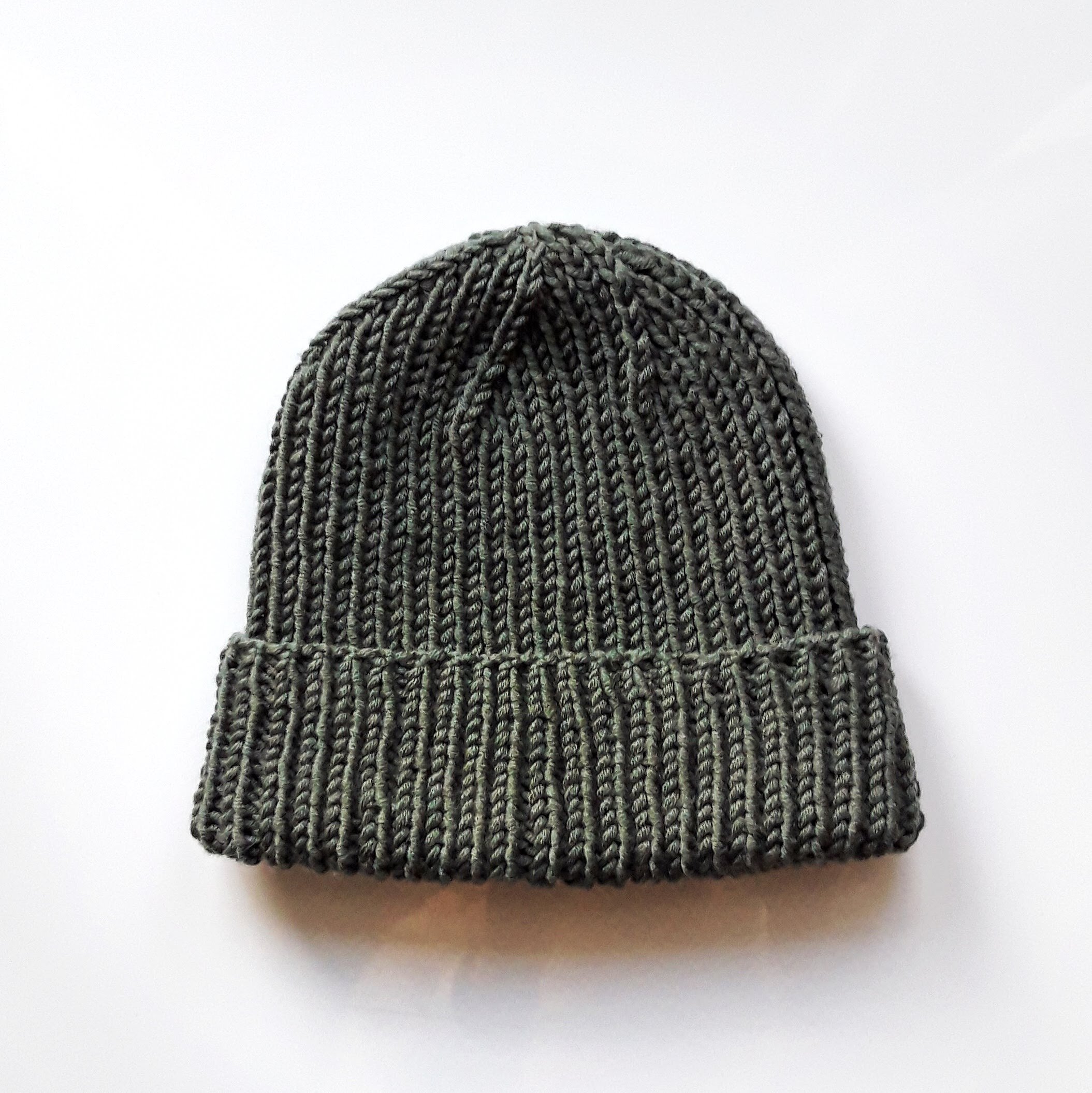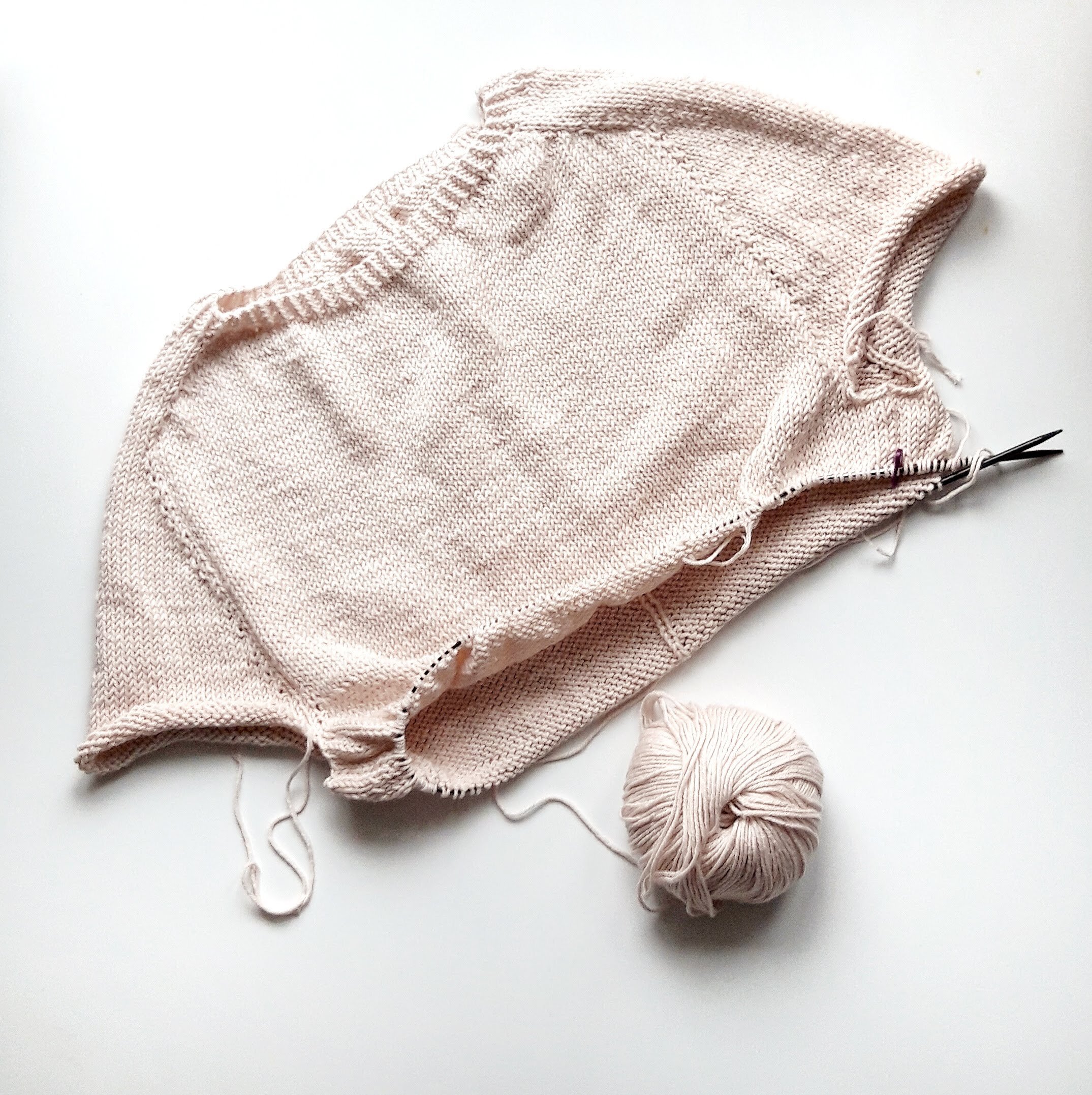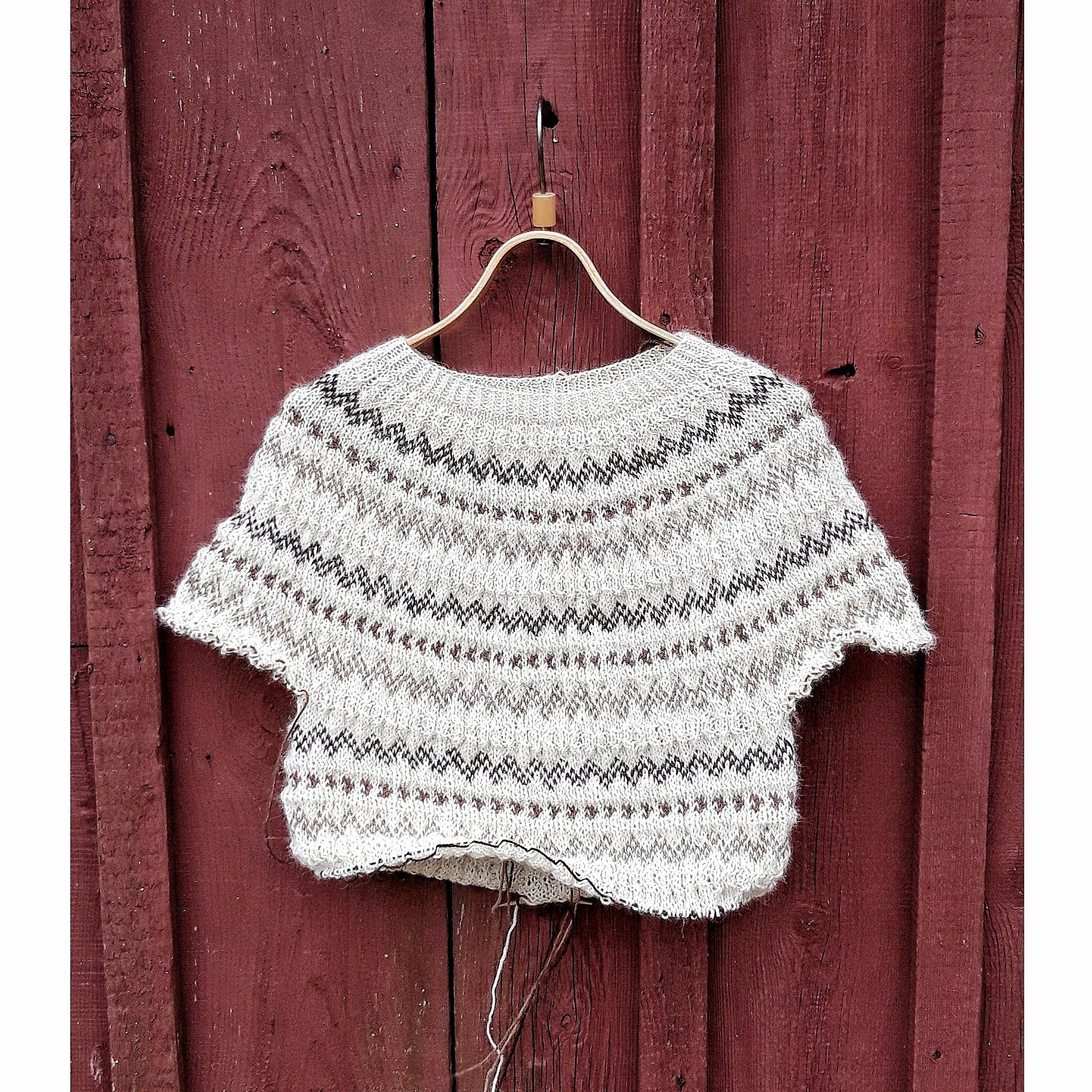Today I’m going to talk a bit about how to choose fabrics for your sewing project. I think that many people struggle with this as it’s a skill that is learned over time and there are no right or wrong answers. Basically you just have to go and try things out and see what really works for you and your life. But there are some guidelines I’d like to share which I think will help you to narrow things down when you are thinking about your next garment project. This is not a super extensive post about fabric types, my aim here is to guide you through the process of choosing the right material for your sewing project with some important things to consider. You can of course go way deeper on this subject but I’d like you to start with basic concepts so you won’t get overwhelmed right away :)
Yes, the world of fabrics is very big and yes, it can be difficult to orientate in the sea of fabric names, especially when you are a beginner sewer. But there’s light, I promise. When I think about how to choose fabric for a specific project I like to take two things into consideration: the composition and the drape of the specific fabric, both are important in order to get the result you imagine in your head. In this first post I’m going to talk about the composition.
Hoy os hablaré sobre cómo elegir telas para tu proyecto de costura. Creo que a mucha gente les cuesta ese tema ya que es una habilidad que creo que viene con tiempo y no hay maneras correctas e incorrectas de hacerlo. Básicamente lo que tienes que hacer es ir probando y viendo qué es lo que mejor funciona para ti y para tu vida. Pero hay unas pautas generales que me gustaría compartir porque creo que ayudan aclarar un poco los conceptos a la hora de decidir qué tela usar para tu próxima prenda. Éste no es un post super extenso sobre tipos de telas, mi intención aquí es guiarte dando algunas pistas importantes para que pienses antes de elegir. Por supuesto puedes investigar más al fondo sobre el tema pero pensaba que molaría más empezar con algo más general para no marearte enseguida :)
Sí, el mundo de las telas es muy grande y sí, puede ser complicado navegar en el mar de nombres diferentes, especialmente si acabas de empezar a coser. Pero hay luz al final del túnel, te lo prometo. Cuando pienso qué tela usar para un proyecto concreto me gsuta concentrarme en dos cosas: la composición y la caída de la tela. Las dos cosas son importantes para poder conseguir el resultado que tienes en mente. En este primer post hablaré sobre composición.
The composition tells you what type of fibers are used in the fabric. You can divide the fibers into two main groups: natural fibers and synthetic fibers.
Natural fibers come from plants or animals, most common ones are cotton, linen, silk, wool and hemp. The best thing about natural fibers is that they are breathable and adapt to the temperature of your body. Cotton, linen and silk keep you cool in the summer, wool will keep you warm in the winter (and many types of wool are also comfortable to wear in the summer). A great thing about these fibers is that they let your body adapt to the weather and the exterior temperature and they are biodegradable.
The “bad” thing about natural fibers is that they wrinkle quite a lot. This can be worked out by ironing your clothes of course but there might be times when you really can’t deal with wrinkles all over the place a second after sitting down and seeing all the wrinkles forming on your pants or a skirt.
I’d also put semi natural fibers into this category (I prefer to call them semi natural instead of semi synthetic, you’ll see why just in a bit). Semi natural fibers like rayon are made out of cellulose following complex procedures. Specific types of rayon include viscose, modal and lyocell (most commonly known as a brand name Tencel). Fabrics made out of rayon fibers have similar characteristics like natural fibers, they are breathable and wrinkle quite a lot.
La composición de la tela te dice de qué fibras está compuesta una tela. Las fibras se dividen generalmente en dos categorías grandes: las fibras naturales y las fibras sintéticas.
Las fibras naturales vienen de plantas o animales, las más conocidas son algodón, lino, seda, lana y cáñamo. Lo mejor de las fibras naturales es que son transpirables y se adaptan a la temperatura de tu cuerpo. Algodón, lino y seda mantienen el frescor en el verano y lana te da calor del bueno en el invierno (y algunos tejidos de lana también son cómodos para llevar en el verano). Lo guay de estas fibras es que ayudan a tu cuerpo para que se adapte al mundo exterior y el tiempo que haga, además son fibras biodegradables.
Lo ”malo” de fibras naturales es que se arrugan bastante. Esto se puede por supuesto arreglar con la plancha pero puede haber momentos cuando realmente no puedes permitirte tener arrugas en tus prendas nada más sentarte llevando unos pantalones o una falda hechos con tejido natural.
Yo pondría en esta categoría también las fibras seminaturales (prefiero llamarlos seminaturales en vez de semisintéticas, ahora ves por qué). Las fibras seminaturales como rayón se producen usando celulosa que se pasa por complejos procesos para fabricar la fibra. Los tipos de rayón tienen diferentes nombres como viscosa, modal o lyocell (más conocido por su nombre de marca Tencel). Las telas producidas con las fibras de rayón tienen características similares como fibras naturales, son transpirables y se arrugan bastante.
On the other hand there are the synthetic fibers, these are man made using chemicals. Most common synthetic fibers you probably know are polyester and nylon. Compared to the natural fibers, many synthetic fibers are more water and stain resistant and they don’t wrinkle. Synthetic fibers are more durable than most natural fibers and will readily pick-up different dyes, that’s why they are quite a popular choice in the garment industry.
The bad things about synthetic fibers are that they are usually not breathable and make your body sweat, this can be especially uncomfortable during the summer. You have to take good care when you iron the fabrics made out of synthetic fibers as they can melt easily when using hot temperatures. Also there’s the electrostatic charge problem: for example skirts made of fabrics made out of synthetic fibers can end up pulling against your legs if you don’t line them with another fabric.
There’s one more synthetic fiber that is well known and you can find it in the composition of many fabrics these days, it’s called spandex (also called elastane or lycra). Mixing spandex with other fibers produces elastic fabrics that stretch (the stretch percentage is determined according to the percentage of spandex used in the particular fabric). Adding spandex to woven fabrics make them a bit stretchy and this way many close fitting garments are more comfortable to wear (if you are wearing jeans, unless they are made out of 100% cotton I’m sure there’s at least 1-3% of spandex in them and that’s why they are comfortable to wear). Adding spandex to knit fabrics makes them stretch in four ways and the result is a nice stretchy fabric (usually 5% of spandex is enough for a nice stretch).
Natural and synthetic fibers can be combined to bring out the best from both of them but the bad thing about blending synthetic fibers with natural fibers is that these fabrics can’t be recycled as well as fabrics made out of exclusively natural fibers. That’s why it’s especially important to take care of your garments in order to wear them for a long time.
El otro grupo grande de fibras son las fibras sintéticos, se hacen usando químicos. Las fibras sintéticas que quizás más conozcas son poliéster y nylon. Comparado con las fibras naturales, muchas fibras sintéticas resisten más al agua y las machas y además no se arrugan fácilmente. Las fibras sintéticas son muchas veces más fuertes que las fibras naturales y se tiñen bien, por eso son bastante populares en la industria de confección.
Lo malo de las fibras sintéticas es que normalmente no son transpirables y hacen que tu cuerpo sude, esto puede ser especialmente incómodo durante el verano. Tienes que vigilar mucho la temperatura cuando planchas tejidos sintéticos ya que aguantan menos calor y se pueden quemar. También está el problema de electricidad estática: por ejemplo las faldas hechas con tejidos sintéticos pueden pegarse en tus piernas si no usas un forro de otro tejido debajo.
Existe una fibra sintética que es muy conocida también y puedes encontrarla en la composición de muchas telas hoy en día, se llama elastano (o spandex, o lycra). Mezclar elastano con otras fibras produce telas que teinen elasticidad (el procentaje de elasticidad o cuánto dan de sí, depende del procetaje de elastano que lleva la tela). Cuando se añade elastano a telas planas se consigue tejidos más cómodos para coser prendas ajustadas (si estás llevando vaqueros, al no ser que sean rígidos de 100% algodón, estoy segura que tienen por lo menos 1-3% de elastano que es lo que hace que sean cómodos). Añadir elastano a telas de punto hace que se pueden estirar en dos direcciones y el resultado es un punto elástico ideal para coser prendas ajustadas (normalmente 5% de elastano es suficiente para una elasticidad buena).
Las fibras naturales y sintéticas se pueden también combinar entre sí para sacar lo bueno de los dos tipos pero lo malo de combinar en la composición de un tejido las fibras naturales y sintéticas es que estos tejidos no se pueden reciclar fácilmente comparado con tejidos hechos solo de fibras naturales. Por eso es muy importante cuidar de las prendas para que duren mucho tiempo.
So basically you can choose between these two types of fabrics (natural vs synthetic) and both have their positive and negative aspects. How to know the composition of the fabric? When you buy online it’s usually easy to get the information about the composition. When you buy in local fabric stores it can be a bit more difficult, at least here in Spain. The correct thing would be to look for the tag on the fabric roll, you should see the composition there. Unfortunately according to my experience when buying fabric in Madrid the information on these tags is not always accurate. Often the rolls are changed up and have incorrect information on the tags (this shouldn’t be like this, we consumers should always have the correct information). Asking a person working in a fabric shop should be another good option but unfortunately again you might not get the right information (at least I’ve had too many disappointing experiences locally…). And there are also many local shops who don’t use any tags at all or they sell remnant fabrics with no information on the rolls at all.
When you are shopping in a place like that you can still get some information by touching the fabrics. It’s probably more complicated for beginners but natural fibers usually have a “more natural feel” and synthetic fibers have a bit more “plastic” feel. Then again fabrics are made in so many different ways these days and it can be very difficult to know what you are dealing with. One of my tried and true tricks is to wrinkle a bit of fabric to see how it behaves, if the wrinkles persist once you let go the fabric there’s a good chance that there are natural fibers involved. When the fabric maintains a crisp look with no wrinkles I’m pretty sure that it’s made out of synthetic fibers. Your work as a fabric detective determining the fiber content probably gets better in time, so don’t worry if it can be confusing in the beginning.
Another trick (that I personally don’t use directly at the fabric store, hehe) is to burn a bit of threads of the fabric and the smell and look should indicate if it’s natural or synthetic fibre (I found this burn chart resource if you want to experiment with this method).
Así que básicamente tienes que elegir entre estas dos categorías de telas (de fibras naturales vs sintéticas) y las dos tienen sus cosas “buenas” y “malas”. Cómo saber la composición de una tela? Cuando compras online suele ser fácil tener esta información, cuando compras en tiendas físicas, puede ser algo más complicado, por lo menos aquí en España. Lo correcto sería buscar la etiqueta que viene en el rollo de tela , deberías ver allí la composición. Preguntar a la persona que vende las telas sería buena opción también aunque de nuevo puede que no te aclare mucho (lo digo por mi experiencia en las tiendas de Madrid, ojalá hubiera más sitios donde te atiendan bien…). También hay muchas tiendas locales que no usan ni siquiera etiquetas o solo venden retales sin información ninguna.
Cuando compras tela en algún sitio así puedes obtener algo de información cuando tocas las telas. Es más complicado para las principiantes pero las fibras naturales suelen tener un tacto “más natural” y las sintéticas más de “plástico”. Pero al mismo tiempo digo que hoy en día hay acabados en las telas tan diferentes que puede ser muy complicado detectar la fibra. Uno de mis trucos es arrugar la tela en la mano si puedo, cuando suelto la tela y las arrugas siguen allí, lo más probable es que lleve fibras naturales. Si la tela sigue como si nada hubiera pasado, lo más seguro que sea sintética. Tu capacidad de trabajo de detective a la hora de averiguar qué telas estás viendo probablemente se mejora en el tiempo así que no te preocupes si te confundes más al principio.
Otro truco (que yo personalmente no uso directamente en las tiendas, jeje) es quemar hilos de la tela para observar el olor y el aspecto del material para saber si son de fibras naturales o sintéticas (encontré esta página en inglés sobre el experimento por si lo queréis probar).
So as I mentioned in the beginning of this post, I’d like to concentrate on two things when choosing fabric: the composition and the drape. These two things are equally important and they influence the final result in different ways. First let’s first just concentrate on the composition and what it actually means in terms of everyday use for you.
There’s normally two scenarios when you buy the fabric: you either already know what you’ll be working on and you are looking for a specific fabric or you just fall in love with a fabric and you are going to buy it and later figure out what you are going to use it for (no judgement here, hehe).
When you know what the project will be you should think about these things:
When will you wear this garment, in hot or cold weather?
Are you someone who sweats a lot or do you always prefer wearing various layers because you’re always cold?
What’s the occasion when you’ll be wearing the garment, is it to hang around the house, go to work or attend a fancy event?
Do you have time to iron/do you like ironing...or you prefer something that needs little care?
Thinking about these things and how you really wear garments in your life makes it easier to choose the fiber content you want to work with….because personally I want my clothes to work for my life and not the other way around.
Así que como mencioné en el principio de este post, me gustaría concentrarme en dos cosas sobre las telas: la composición y la caída. Las dos cosas son igual de importantes e influyen el resultado final de maneras diferentes. Primero vamos a concentrarnos en la composición y qué significa eso realmente en tu uso diario de las prendas que coses.
Normalmente hay dos escenarios cuando compras telas: o ya sabes lo que quieres coser y estás buscando una tela concreta para este proyecto o lo que pasa es que te enamoras de una tela y lo vas a comprar y después ya vemos lo que haces con él (no juzgo a nadie aquí eh, jaja).
Cuando sabes qué prenda quieres coser deberías pensar en:
Cuándo vas a llevar esta prenda, cuando hace calor o cuando hace frío?
Eres alguien quien suda mucho o prefieres llevar siempre varias capas porque eres muy friolera?
En qué ocasión vas a ponerte la prenda, es para estar por casa, en el trabajo o para un evento especial?
Te gusta / tienes tiempo para planchar? ...o prefieres algo que sea de muy fácil cuidado?
Pensar en estas cosas y cómo llevas tú tu ropa en el día a día de tu particular vida hace que sea más fácil elegir la composición de tela que quieres usar para tu proyecto...porque personalmente yo prefiero que mi ropa se adapte a mi vida y no al revés.
I’m going to put you some examples, maybe it can clear out some cases. So if you want to make a summer blouse and you are someone who sweats a lot or you live in a very hot climate, I’d say that natural fibers are a good choice for you, they will let your skin breathe and even when you sweat you won’t smell bad after a second. Then again if you will be wearing your blouse in a hot climate and you are going to an event where you just can’t have your sweaty armpits to be seen (happens to me quite a lot here in Spain…) I’d make a sleeveless top out of a fabric made of synthetic fibers, this way your armpits can have their “air”, hehe, but there won’t be visible sweat stains. Synthetic fibers are also great when you travel, you can pack a light suitcase as you can wash and dry this type of blouses in no time.
When you want to sew a winter coat and you live in a cold climate or you are very cold all the time (me!) I’d suggest using wool fabrics, they are very warm and help to regulate the temperature so you won’t sweat much even when you have to be outside and then use the transport where it’s hot etc. Also wool can be pressed amazingly well and when you sew a coat it’s so much easier to get neat finishings when you work with wool. But of course there are synthetic fibers that can help with keeping warm too, you can probably use an interlining made out of special synthetic fibers that will give you the extra warmth you need.
By the way, here’s one more thing that I really like about wool both in fabric and in knitted garments. Many people are afraid of wool because they think it needs a lot of special care, you can’t throw garments made of wool into the washing machine etc (although there are already superwash yarns available). But for me it’s the opposite, wool is an amazing material that can be left out of the closet to “breathe” (I usually leave my wool sweaters and coats out on the terrace for a day after wearing them) and all the bad odours will disappear. If you get stains on your garment you can also just spot clean and you don’t need to wash the entire garment. So as wool lets your skin breathe and you won’t sweat + caring for it is not so complicated, for me it’s just a fiber of dreams!
Back to examples, also think about how and exactly when you will wear the garment. My mom made my sister a silk dress for her graduation, it was a special event and silk truly is a special fabric. The thing is that she had to sit on the stage and everyone was called individually to get their diplomas...and what happens to natural fibers when you sit down for a while? Yes, there are these wrinkles that are formed and they will be very visible especially on plain fabrics (prints can really help with hiding the wrinkles!). So maybe it would have been a better idea to use a fabric that didn’t wrinkle for that special event. Well, it’s a lesson learned at least!
Voy a usar algunos ejemplos, quizás eso ayuda aclarar cosas. Imaginamos que quieres coser una blusa de verano y sabes que sudas bastante o que vives en un clima muy cálido. Yo diría que las fibras naturales son una buena elección para ti porque dejan que tu piel transpire e incluso si sudas no vas a oler mal después de dos segundos. Sin embargo si vives en un clima muy cálido y sabes que quieres ponerte tu blusa para ir a algún evento especial donde obviamente no quieres que se vean marcas de sudor (me pasa mucho eso aquí en España…), lo que puedes hacer es coser la blusa con un patrón sin mangas usando tejidos sintéticos. De esa manera tus axilas estarán “al aire” y la tela no va dejar que se vean las marcas de sudor. Las fibras sintéticas también son muy cómodas cuando viajas, puedes hacer una maleta pequeña porque tejidos así se secan muy rápido al lavarlos.
Si quieres coser un abrigo de invierno y vives en un sitio frío o eres muy friolera (yo!) recomendaría usar tejidos de lana, son muy cálidos y ayudan a tu cuerpo para poder regular la temperatura así que no sudas incluso si tienes que estar en la calle con el frío y luego usar transporte donde ponen mucho más calefacción. Además lana se plancha increíblemente bien y cuando coses un abrigo es mucho más fácil conseguir acabados bonitos. Por supuesto hay también tejidos sintéticos que ayudan con dar calor, probablemente puedes usarlas para forrar tus prendas de invierno.
Por cierto, hay una cosa más sobre lana que me encanta y va tanto sobre las telas de lana como para los jerseys tejidos a mano/comprados. Muchas veces la gente tiene miedo a la lana porque tiene fama de difícil cuidado, no se puede lavar a máquina etc (aunque ya existen lanas superwash para eso también). Pues nada más lejos, la lana me parece un material increíble porque si dejas la prenda a airear (yo mis jerseys y abrigos los dejo en la terraza al aire libre un día después de ponermelos) se queda como nuevo, no hay olores ni nada similar. Si manchas la prenda de algo puedes limpiar el sitio concreto, no hace falta lavarlo todo. Así que entre que lana deja que tu piel transpire y no te hace sudar y también su cuidado es más fácil de lo que parece...a mí me parece un material super agradecido!
De vuelta a los ejemplos, también piensa exactamente cómo y cuándo vas a ponerte esa prenda. Mi madre hizo a mi hermana un vestido de seda para su graduación, fue un vestido especial y la seda desde luego es un tejido especial. Lo que pasa es que en este evento los alumnos tenían que sentarse en el escenario mientras les llamaban para recoger su título...y qué pasa a los tejidos naturales cuando te sientas un rato? Sí, salen arrugas y especialmente en telas lisas se notan un montón (estampados por cierto ayudan bastante en camuflar arrugas!). Así que quizás hubiera sido mejor para este tipo de evento usar para la falda una tela sintética para evitar un problema así...en fin, algo nuevo aprendimos!
When you see a fabric you love and you absolutely “need” to buy it even when you are not sure what to do with it yet, I’d think about the same things in order to know how much fabric you should buy. Think about how you would use this fabric and for what...is it just the pretty print that is catching your eye, can you imagine making something that will fit in your life?
So I guess you get the point, the fabric content plays an important role because everyone lives different lives and we all use our clothes in different situations. What can be comfortable at home might not be suitable for long office hours (maybe at work you are cold all the time so you need to think about warm layers...or maybe it’s the opposite and you have to choose breathable fibers as it’s really hot in your office all the time). I personally use more fabrics made out of natural fibers. When I shop for fabric I no longer go crazy about a print if I know it’s a polyester blend that I won’t wear anyway. I prefer cotton and rayon fibers for summer/spring and I love wool for winter and autumn. I’ve also had bad experiences with pilling on synthetic fabrics and I really don’t want to spend time on sewing something when it will look bad afterwards. But as I explained there are no right or wrong answers, there probably is an occasion for every fabric, you just need to think about what you are making and how you will wear it.
So this was the first part of the blog post concentrating on the fabric composition and the second will be about the drape. I like to separate these two concepts because I think that they both play an important role and these roles are very different. I’ll see you around next week for the second part of this post. Hope you found this interesting!
Cuando ves una tela que te encanta y necesitas comprarlo sí o sí aunque no sabes muy bien qué hacer con él yo pensaría sobre las mismas cosas para poder saber cuánta tela necesitas. Piensa para qué usarías la tela y cómo sería la prenda...es solo el estampado bonito que te está llamando o realmente puedes coser algo que va bien con tu estilo de vida?
Así que me imagino que lo entiendes, la composición de la tela es importante porque todas vivimos vidas diferentes y usamos nuestra ropa en situaciones distintas. Lo que puede resultar cómodo en casa puede que no sea adecuado para el trabajo (igual pasas frío en tu trabajo y tienes que pensar en capas para poder estar bien o quizás es al revés y ponen mucha calefacción y te toca pensar cómo vestirte para no morir de calor). Yo personalmente uso más telas de fibras naturales. Cuando compro telas ya no me pongo como una loca viendo estampados si son de poliéster que no me voy a poner. Me gustan fibras de algodón y rayón para primavera/verano y me encanta lana para otoño/invierno. También he tenido malas experiencias con pilling en tejidos sintéticos así que no quiero arriesgarme con gastar mi tiempo en coser algo que no va a quedar bien. Pero como expliqué antes, no hay respuestas correctas e incorrectas, probablemente existe el momento para cada tela, simplemente piensa qué vas a coser y en qué momento te lo vas a poner.
Así que ésta ha sido la primera parte del post donde he concentrado en la composición y en la segunda parte os hablaré sobre la caída. Me gusta separar estos dos conceptos porque creo que hay que verlos por separado para entender cómo trabajan juntos a la hora de crear una prenda. Os veo la semana que viene para la segunda parte de este post. Espero que esto ha sido interesante!
